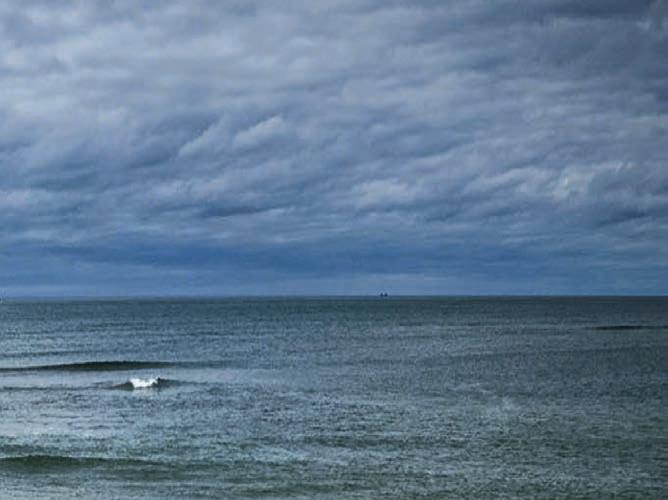




















































































Cox & Palmer makes the difference crystal clear - that’s why Atlantic Canadians have relied on us for more than 165 years.
Our lawyers draw on a deep understanding of their clients’ needs to provide strategic legal advice when it matters most.
At Cox & Palmer, great relationships lead to great results.




McNutt
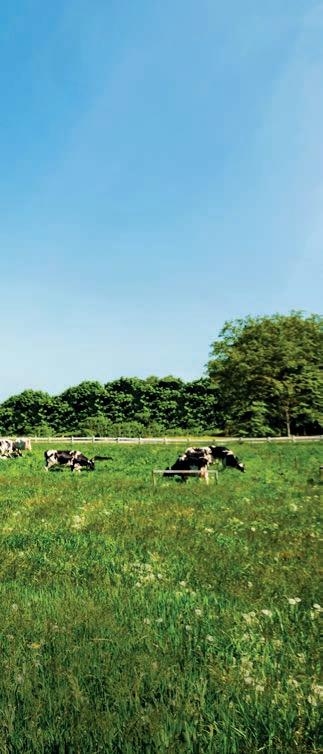




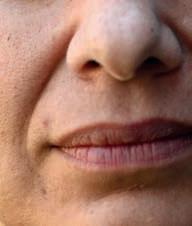
The Dal Alumni Link pairs emerging professionals with established Dal alumni mentors to facilitate meaningful connections.
Our virtual one-to-one mentoring program is designed to cultivate mentorship opportunities for our Dal alumni regardless of their physical location, matching mentors to mentees all across the globe.
alumni.dal.ca Join today








 By AnnMarie MacKinnon
By AnnMarie MacKinnon
In this issue of DAL Magazine, we’re taking stock and looking toward the future. As you flip through the pages, you may notice a fuller expression of Dal’s new brand—a fresh look that represents a fresh outlook, one that is decidedly oriented around making change right here in our communities, as well as globally.
Case in point: this issue’s feature stories all explore where we’ve come from and where we hope to go. Dr. Anya Waite describes the people and experiences that set her on her current path and how she hopes to tackle the challenges of climate change (“Wind at her Back” by Ryan McNutt, p. 25); Matt Reeder traverses the trajectory the Truro Faculty of Agriculture has taken since becoming part of Dal 10 years ago (“Better Together,” p. 37); and in “Trained for Change,” Kate Rogers talks with the changemakers of Dal’s three health faculties to discover what they’re doing to ensure better health-care outcomes for diverse populations (p. 30).
As always, we encourage you to stay in touch. Submit a Class Note (email classnotes@dal.ca), share your thoughts on what you read in this issue (email editor@dal.ca), and check out our online edition where, if you’re not into the whole brevity thing, you’ll find lengthier interviews, more images and supplemental content (dal.ca/ dal-magazine).
ASSISTANT VICEPRESIDENT, COMMUNICATIONS, MARKETING & CREATIVE SERVICES
Matt Proctor
EDITORIAL MANAGER
AnnMarie MacKinnon
EDITORIAL COMMITTEE
Sheila Blair-Reid
Alison DeLory
Keri Irwin
Ryan McNutt
Laurel Munroe
Stefanie Wilson
CREATIVE DIRECTOR
Paul Williams DESIGN
Design Services

ADVERTISING ENQUIRIES dalmag@dal.ca
ADDRESS CHANGES
Phone (902) 494-6855 1 (800) 565-9969
EMAIL alumni.records@dal.ca
POSTAL MAIL
Alumni Records, Office of Advancement, Dalhousie University, PO Box 15000, Halifax, Nova Scotia B3H 4R2
















Great conversation has a way of bringing people together. This year’s line-up of Open Dialogue Live events provides an opportunity to learn from and engage with Dal researchers, faculty, alumni and students on current and timely issues.
December 8, 2022
Developing clean technology solutions

February 23, 2023
Improving health outcomes
April 20, 2023 Sustaining the ocean
For more details, please visit dal.ca/alumni
november 15, 2022
As this edition of DAL Magazine reaches your mailbox or inbox, I will be winding down my time as Dalhousie president. In the new year, I will be moving to Montreal to begin a new chapter in my life and career as principal and vice-chancellor of McGill University.
The decision to leave Dalhousie comes with a great deal of emotion.
I had planned to be part of this amazing university for some time to come. This move is not something I had contemplated or deliberately sought out, but rather came about from a confluence of opportunities that proved persuasive, including a need to be closer to my family and the enticing challenge of leading one of Canada’s largest, most well-established universities. But my love of Dalhousie and its people made this one of the more difficult decisions of my career.
We have had an amazing journey together these past three years. We have come through the challenges of the pandemic with impressive results in enrolment, research funding, fundraising and more, and with renewed purpose in our mission. This exceptional constellation of people who make up our Dal community—students, faculty, staff, alumni and supporters—is poised to accomplish truly great things in the next few years.
I am sad I won’t get to be an active part of it. At the same time, I know Dalhousie is so much bigger than its president. While I am proud of what we have accomplished during my time here, I am prouder that there is an entire institution of committed, inspiring people who will ensure Dalhousie continues its ascension into the ranks of the world’s most esteemed and impactful universities.
I will always consider myself immensely proud to be associated with Dalhousie, and I am heartened to think of how the journeys of two of Canada’s greatest universities might continue to intersect in the years ahead—strengthening research and education in this country, together.


A new partnership was announced between Dalhousie Medical School and Cape Breton University (CBU) that aims to alleviate family physician shortages in rural Nova Scotia, including Cape Breton, Mi’kmaq, and African Nova Scotian communities. The Medical Education Pilot Initiative will see CBU sponsor five seats at Dalhousie’s Faculty of Medicine MD Program for qualified rural Nova Scotian applicants. —Staff
Professor Erin Johnson, the Herzberg-Becke Chair in Theoretical Chemistry, is the








first Dalhousie researcher to receive the Steacie Prize, one of Canada’s most prestigious awards for early-career scientists. It’s also the first time the prize has been awarded to a scientist in Atlantic Canada. Dr. Johnson and her research group at Dal focus on intermolecular chemistry, studying the forces between molecules that facilitate interactions. Her research has resulted in 134 papers that have been cited 20,860 times to date and she is credited with developing some of theoretical chemistry’s key computational methods. —Andrew Riley
Dal recently launched a new initiative that allows learners to take select courses at the university fully online without applying to a program. Dal’s
Faculty of Open Learning & Career Development led the development of DalOpen, which seeks to broaden access to the university so more people can become part of the Dal community on a schedule that fits their life. The courses currently featured as part of this initiative include “Exploring Sustainability,” offered by the College of Sustainability, and “Innovation: An Introduction to Design Thinking,” an introductory course offered by the Faculty of Management. —Mary-Eleanor Power
One of the many sacrifices university students had to make during the pandemic was missing out on an in-person graduation ceremony. In July Dal welcomed more than 1,500 members of the Class of 2020 and Class of 2021 who chose to come back to campus for in-person ceremonies.
At long last, they got to enjoy the gathering of classmates, cheers from supporters and university leaders, a return to their alma mater (they are technically alumni now, after all), and a jaunt across the stage of either the Rebecca Cohn Auditorium or the Langille Athletic Centre. —Matt Reeder
Dr. Erin Johnson is Dalhousie’s first winner of the Steacie Prize, an award given to early-career scientists
An initiative of the Mi’kmaw Native Friendship Centre, the new Wije’winen Health Centre will serve patients who have not had options for self-directed care in the past, and will serve as a space for urban Indigenous peoples in Halifax to seek culturally safe primary care. The health centre will also boast a full-time academic physician position and offer medical students and residents a comprehensive experience in Indigenous health— something that has not previously existed in the central zone. The clinical lead at Wije’winen Health Centre, Dr. Brent Young, is an Anishinaabe family doctor and the academic director of Indigenous Health in Dalhousie’s Faculty of Medicine. —Jane Gaffney
A brother and sister team from Dalhousie won first place at the global finals of the World’s Challenge Challenge (WCC) for pitching an app that serves as a one-stop safety solution for victims of intimate partner violence. Anamika Ahmed, a Master of Applied Computer Science student, and Anik Ahmed, a Bachelor of Commerce student, beat out 15 other teams from across the world in the global competition, which is hosted by Western University. The sibling team was awarded $30,000 to continue developing the app.
—Stephen Abbott
The team behind a new Nova Scotia program using exercise to prevent and manage chronic conditions is aiming to spur seniors to become more active— and stick with it. LiveWell, developed by researchers at Dalhousie and Acadia universities, was piloted at select Nova Scotia YMCA delivered by qualified exercise professionals who personalize programming to a range of participants across the disease and ability spectrum, with the goal of building strength, balance, and overall fitness. The team will be studying the program for three years with a goal of determining what makes people understand the benefits and make a commitment to exercise when they have so many competing priorities.
—Kate RogersOceanography stood out in this year’s Global Rankings of Academic Subjects with a first-place ranking in Canada and 32nd globally. Atmospheric Science tied for second in Canada, with a global ranking of 76-100. Other Dalhousie subjects that placed in the top 150 globally are Environmental Science & Engineering, Dentistry & Oral Sciences, and Political Sciences. Released annually by the ShanghaiRanking Consultancy, the rankings include more than 1,800 out of 5,000 universities considered across 96 countries and regions.
—Stefanie Wilson
A new land-based learning program designed by Dal-based SuperNOVA and the Ulnooweg Education Centre promises to bring Indigenous youth more opportunities in STEM (science, technology, engineering and mathematics). The program, known as Melkiknuawti, draws on the principles of Etuaptmumk—a Mi’kmaw word that directly translates into “seeing with two eyes.” The week-long program will align STEM concepts with regional Indigenous knowledge in the same forests where ancestors of the Mi’kmaq have flourished for thousands of years.
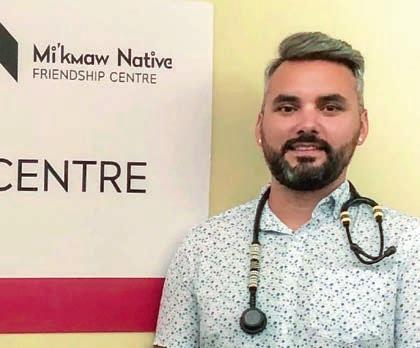
 —Lauren Phillips
—Lauren Phillips
A third-year Health Sciences student at Dalhousie has received one of the top university awards in Canada. Mohamed Nashnoush has been named

one of the prestigious 2022 3M National Student Fellows, awarded by the Society for Teaching and Learning in Higher Education (STLHE). He also received the Agmen Scholarship, which provides undergraduate research opportunities at 24 host institutions. The 3M Fellowship honours students who have demonstrated outstanding leadership in their lives and at their post-secondary institution. As a 3M Fellow, he will develop and complete a funded project on teaching and learning. Each cohort will have up to $25,000 for their project.
—Dawn MorrisonThe new look for Dalhousie’s logo—launched this spring as part of the latest refresh of Dal’s brand—is still instantly recognizable as the iconic eagle and shield. But what’s different about it is emblematic of the approach for the brand refresh overall: cleaner, simpler, better designed to meet the requirements of an increasingly digital world and built around the latest web accessibility standards. In addition to the logo refresh, Dalhousie’s brand now includes a comprehensive system built with both alignment and flexibility in mind. Among the brand’s more novel features is a new shape—dubbed the “Dalcon” (short for “Dalhousie icon”)— that’s borrowed from the logo’s eagle and acts as a “brand cue” across the creative platform.
—Ryan McNutt

Incoming Faculty of Science students now have the option to complete the first year of their Bachelor of Science degree on the smaller Truro campus before transitioning into their second and final years in Halifax. Truro Start will enable students to take advantage of smaller class sizes, meet other students in their cohort through a first-year interest group, and receive assistance from a dedicated program coordinator and advisor. The program expands Dalhousie’s reach to offer more opportunities for local, rural, African Nova Scotian, and Indigenous communities.
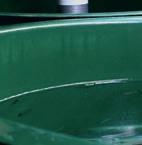
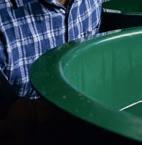


At the base of a winding staircase and tucked away in a dimly lit room, about a hundred healthy fish represent the last, best hope for an ancient species on the brink of extinction. Set against a concrete wall lined with black water pipes and the occasional lightbulb are a half-dozen large fibreglass tanks that contain the only remaining captive Atlantic whitefish on earth. Their existence in the basement of Dalhousie’s Steele Ocean Science Building is the result of the work of a small group of researchers and biologists committed to saving an ancient aquatic species that is so endangered its only known habitat is three lakes


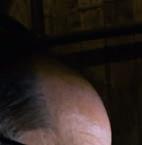
within a single watershed in Nova Scotia.

Dr. Paul Bentzen and colleagues at Dalhousie, the Department of Fisheries and Oceans Canada (DFO) and the conservation group, Coastal Action, have spent the last four years rearing hundreds of the sleek, silvery fish in Dal’s Aquatron to serve as broodstock, in the hopes that they could eventually be captively spawned, and their progeny could be released back into the wild.
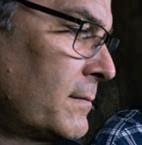
That work is beginning to pay off. The team has released more than 150 juvenile Atlantic whitefish into the Petite Riviere watershed, returning them to one of the three lakes near Bridgewater, N.S., that was once home to relatively healthy populations of the species. It is very early days, but so far the results look promising and the fish appear to be doing
well in their new home. Jeremy Broome, an aquatic science biologist with DFO, is leading that part of the project for the federal department and he and his team have overseen several such releases recently. Each release is a multi-step process that requires patience and precision when it comes to trying to ease the fish into a more natural setting.
“We think we’re pushing back the extinction clock with what we’re doing,” he said. “It’s a big experiment and we have to see how this develops over time, but these have been big gains and what we’ve been working toward over four or five years. We’ve finally reached this point where we have progeny to work with. We’re laying the foundation to turn the corner on this.”









 —Alison Auld
—Alison Auld



On Indigenous People’s Day (June 21), the Dalhousie Libraries celebrated with members of the Indigenous community by opening a room they hope will inspire celebrations and programs on campus about Indigenous culture for years to come. The Ko’jua Okuom, located in the Downie Wenjack Legacy Space on the first floor of the Killam Library, was developed to be a welcoming gathering place for Indigenous students, staff, and faculty to host and attend Indigenous ceremonies and events.
Samantha Adema, Dal’s Indigenous Services Librarian and master of ceremonies for last Tuesday’s celebration, recalled how excited she felt when she first heard about the initiative to develop an Indigenous community room in 2020.
“I’m Mi’kmaw, I grew up here in the city, but I’m a member of Sipekne’katik, where my dad is from. I remember when I first came to university how out of place I felt,” she said. “When I started here as a librarian, I saw my own experiences reflected back in the feedback we received from Indigenous students. Students reported that they wanted to see more representation of their culture in the library, more visibility of Indigenous resources, and more culturally relevant programming. With that in mind, I think that this room is an excellent step in breaking down some of those barriers.”
“I really want this to be a space for L’nu [Mi’kmaq] students, and the community, to feel represented and at home at Dalhousie,” she added.
The room’s name, Ko’jua Okuom, refers to an Indigenous dance of friendship.




“The Mohawk gave us that dance in friendship and peace,

dancing together as partners,” explained Elder Thomas Christmas, who performed a smudging ceremony and blessed the new name.
“Some people call the Ko’jua the two-step or the friendship dance. It’s a dance of getting together and acknowledging somebody and it’s an important aspect of our people when they celebrate. It’s fun, it gets your heart pumping, it gets people talking, and it’s beautiful,” he added.
Catherine Martin, Dal’s director of Indigenous community engagement, opened the event by singing a traditional Mi’kmaq welcome song while playing her drum. “The drumbeat represents the heartbeat of Mother Earth, or the heartbeat of our mother,” Martin explained. “That’s something we’ve all heard; we know that language very well because our mother taught us. We’re always told in Mi’kma’ki to speak from the heart.”—Marlo MacKay
quoted.
Dal experts in the news.
CANADIAN LAWYER Two upcoming SCC cases could have significant implications for Indigenous law



“It will be revisiting things that legal scholars have been saying, for a long time, are problems with the jurisprudence, and confronting the issue of Indigenous sovereignty, jurisdiction and selfgovernment in a way that the court has avoided for a while,”
Naiomi Metallic, Schulich School of Law

THE POST Rocket man: It could take a long, long time, but startup has lit the fuse for a NASA north
“People are right to be skeptical.”
Dr. Karen Foster, Department of Sociology

Catherine Martin, Director of Indigenous Community Engagement, leads President Deep Saini and others into Ko’jua Okuom in the Killam Library

“Our appetite for the power of cute shows no signs of waning, so it’s important to confront the cost of child stars.”

Dr. Jacqueline Warwick, Department of Musicology




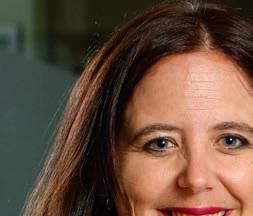


The Royal Society of Canada added five world-class researchers from Dalhousie to its ranks in recognition of their outstanding scholarly, scientific, and artistic achievements in September. This includes three Fellows and two new Members of the College of New Scholars, Artists and Scientists. Dalhousie’s newest Fellows are Dr. John Archibald of the Faculty of Medicine, Dr. Christine Chambers of the Faculties of Science and Medicine, and Dr. John Crowley of the Faculty of Arts and Social Science. They join 2,558 Fellows from across the country, distinguished Canadians from all branches of learning elected by their peers for contributions in the arts, humanities, and sciences, as well as in Canadian public life. Dalhousie’s two
new Members of the College of New Scholars, Artists and Scientists are Dr. Karen Foster of the Faculty of Arts and Social Science, and Dr. Aaron MacNeil of the Faculty of Science. Their membership recognizes their emergence as research leaders at an early stage in their careers who have demonstrated high levels of achievement. “Recognition by the Royal Society of Canada is among the highest honours of Canadian academic life,” says Dr. Alice Aiken, Dalhousie’s vice-president research and innovation. “It makes me incredibly proud to be able to herald these tremendous Dalhousie researchers among Canada’s top scholars. Their work advancing science, policy and human welfare is exemplary.”—Staff
Get the latest DAL NEWS at dal.ca/news








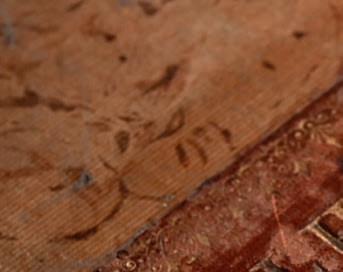


Dalhousie libraries have come a long way since 1867, when a Senate Committee on the Library Scheme was established. With $1775 in private subscriptions and the introduction of a dedicated $1 student fee, the library seemed set to flourish. However, lack of dedicated space and the Board of Governors’ regular diversion of library funds to other purposes impeded progress. Another constraint was the university librarian’s lack of status. Until the early 1950s, the university librarian was appointed by the Senate library committee, which tended to nominate a junior faculty member to take on the unpaid work of collecting fines, placing book orders— when there was money to do so—and circulating the collection. Walter Murray, the seventh of Dalhousie’s faculty-librarian appointments, must have been relieved in 1907 when the university allowed him a full-time paid library assistant—and a typewriter. In 1915 the first trained library staff person arrived to work under Archibald MacMechan. Frances Jean Lindsay was hired as a cataloguer, and during her three years at Dalhousie she reclassified the entire collection according to the new Library of Congress system, doubled the library’s service hours to 44 a week, initiated circulation procedures and wrote a regular column in the Gazette.
C.L. Bennett was the last of the faculty-librarians, serving between 1931 and 1951, when daily operations were in the capable hands of librarians Ivy Prikler, Dorothy MacKay and Jean Carter. In 1952 Douglas G. Lochhead was hired as Dalhousie’s first paid University Librarian, appointed with faculty status and directly responsible to the university president. Half a century later, during Donna Bourne-Tyson’s tenure, the position of University Librarian was elevated to Dean of Libraries. As we bid her a fond farewell on her retirement, we are thrilled to greet another Dal alum as the second Dean of Libraries— Michael Vandenberg, welcome home!
—Jennifer Lambert

cated to guiding substance-use health policies and practices funded by the Canadian Institutes of Health Research.
With $2.4 million in new funding the node of the Canadian Research Initiative in Substance Misuse will focus on three research areas, including youth, mental health-substance use comorbidity, and rural and remote services for addictions.
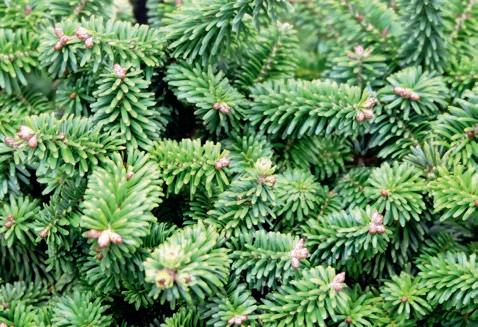
Researchers have discovered a potential new tool in the fight against ticks in the same place the prolific insects are found.
A team led by Dr. Shelley Adamo, a professor in the Department of Psychology and Neuroscience, found that balsam fir needles can kill blacklegged ticks during the winter, preventing them from surviving until spring.
The finding offers hope that this natural resource could be used to reduce both the tick population and the spread of Lyme disease, which can cause fever, fatigue, and a skin rash and can spread to the joints, heart, and nervous system.
RESEARCHER: Shelley AdamoDr. Stewart will prioritize the impacts of youth tobacco and cannabis vaping on lung health, psychosocial interventions in opiate substitution therapy clients, and partnerships with Indigenous communities around substance-use service delivery.
RESEARCHER: Sherry Stewart
An innovative “climate scorecard” developed by Dal researchers reveals which species will be winners or losers under climate change if greenhouse gases continue to be emitted at high rates.
Their report evaluated climate risk for 25,000 marine species under two different scenarios: one in which emissions are
high and the other if emissions are sharply reduced. Under the worst-case emissions scenario, 87 per cent of marine species would be under critical climate risk.
The study analyzed how the species’ characteristics, such as body size and temperature tolerance, interact with past and future climate conditions in all parts of the ocean where they live.
RESEARCHERS: Daniel Boyce, Derek Tittensor, Boris Worm; and University College London (UK) Bedford Institute of Oceanography (Canada)
The Ocean Tracking Network, headquartered at Dalhousie University, has been awarded a grant of $38.5 million from the Canada Foundation for Innovation’s (CFI) Major Science Initiatives Fund.
Since 2008, OTN has deployed innovative ocean monitoring equipment and marine autonomous vehicles (gliders) in key aquatic locations around the globe and has since expanded to include remotely operated vehicles and side scan sonar technology.

An Ocean Tracking Network glider is deployed at sea
Clinical psychology and psychiatry researcher Sherry Stewart will lead a new Atlantic Canadian research node dedi-
Entomologist Paul Manning is working to understand how the method dung beetles use to nest in cow patties can impact the output of methane gas
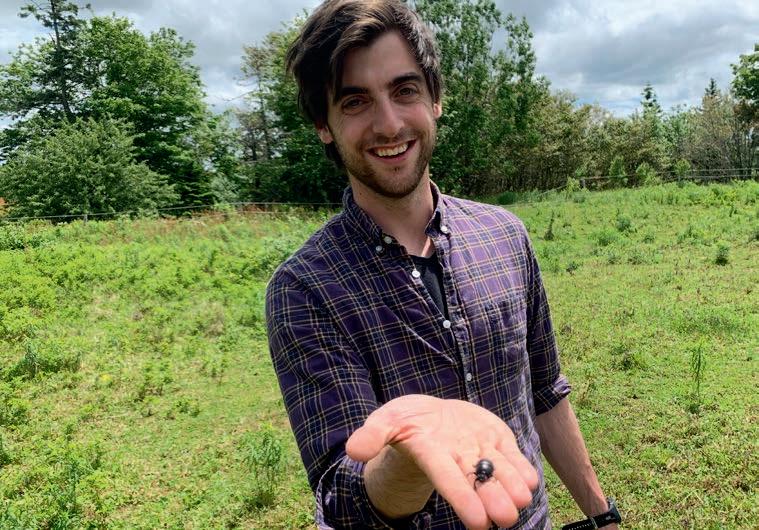
Collaborators around the world use OTN’s global infrastructure and analytical tools to document the movements of more than 300 keystone and commercially and culturally valuable aquatic species in the context of changing ocean and freshwater environments.
RESEARCHERS: Sara Iverson, Fred Whoriskey
N.S. report finds the kids are not alright
Dal researchers have provided a comprehensive glimpse into the well-being of children and youth in Nova Scotia in a unique report that looked at their security, development, and physical and mental health through the lens of a child’s rights.
One Chance to be a Child was led by Dal’s Department of Pediatrics and the Healthy Populations Institute, and used datasets and consultations with young people to uncover for the first time what is known about the well-being of youth in the province.
They found that while many young people are doing well, too many are being left behind. For example, one in five children and youth reported low life satisfaction, living in a food-insecure household, or feeling unsafe or threatened at school due to bullying in 2018-2019.
RESEARCHERS: Laura Stymiest, Sara Kirk, Andrew Lynk
All said they experienced a range of emotions, including anxiety, depression, and anger, leaving them feeling that they couldn’t safely use public spaces for fear of discrimination. But many also said they felt connected to their communities in Canada.
RESEARCHERS: Josh Ng-Kamstra, Stephana Julia Moss, Jeanna Parsons Leigh, Faizah Tiifu, Emily FitzGerald, Rebecca Brundin-Mathers, Alexandra Dodds, Amanpreet Brar, Chloe Moira de Grood, Henry T. Stelfox, Kirsten M. Fiest
As COVID-19 spread around the world after emerging in China, people of Asian descent started to experience one of the pandemic’s uglier consequences—a surge in discrimination that involved both verbal and physical abuse.
A team at Dalhousie looked into how COVID-19 affected Asian Canadians’ sense of safety and found that many experienced outright racism or felt unsafe because of the unexpected and unpredictable nature of discrimination.
The researchers interviewed Asian Canadian women and men from March to May 2021.
A challenge as big as climate change requires investigating all the angles. Among the 42 Dalhousie researchers receiving a share of $7 million in new NSERC Discovery Grants are three addressing the issue from completely different directions.
Oceanographer Katja Fennel is accessing data from thousands of submergible floats scattered around the ocean to learn about its dynamics and composition. Entomologist Paul Manning is working to understand how the method dung beetles use to nest in cow patties can impact the output of methane gas. Physicist Penghao Xiao is focused on solving a dizzying number of equations to get insights into what charges battery science.
In their own ways, they are all seeking insights and solutions that could help assuage a climate catastrophe.
RESEARCHERS: Katja Fennel, Paul Manning and Penghao Xiao
Old friends and new enjoyed a sold-out champagne brunch that closed out the Dal Alumni Days weekend in May. Those celebrating a milestone anniversary year were recognized and honoured.
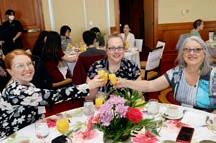

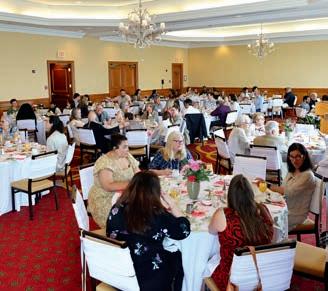
The 24th annual Dal Golf Classic happened in August at The Links at Brunello. One of Halifax’s most popular golf tournaments, it offers students, faculty, staff, alumni, and friends an opportunity to hit the links and support Dal Athletics.
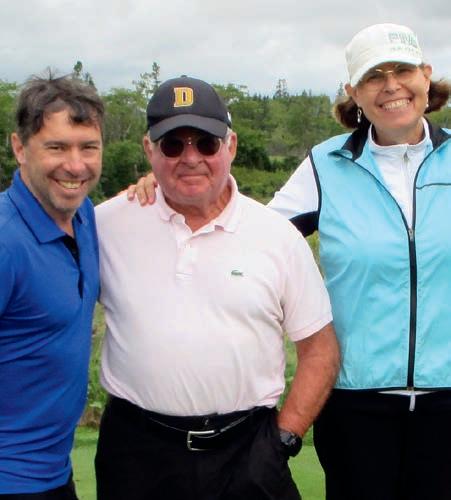


Concertgoers celebrated the grand re-opening of the Dal Arts Centre and successful conclusion of the Performing Arts Campaign—the largest-ever investment in the performing arts in the Maritimes—at Resounding Fountain School of Performing Arts students, Sarah Prosper (BSc’22), Reeny Smith, Ashley MacIsaac with Scott MacMillan (BA’76), alumni band Hillsburn, Kiefer Sutherland, and Polaris Prize winner Jeremy Dutcher (BA’12) all performed. Throughout the evening, icons including Karen Kain, Anne Murray and Sarah McLachlan (Honorary Chair of the campaign’s Performing Artists Cabinet) offered congratulations via video messages.

Law alumni reunited at Weldon in September. They enjoyed the annual law alumni reception and dinner (pictured), Domus Night, and an open house and luncheon.
Dalhousie’s second annual Stanfield Conversation, moderated by Portia Clark (BA’91), brought leading political scientists and communications specialists together to explore how technology and media fragmentation are contributing to a crisis of democracy and what can be done to minimize the harm.


Arad Gharagozli (MASc‘22), who through the Dalhousie Space Systems Lab constructed the first satellite made in Nova Scotia to be launched into space, and Tony Pellerin of the Canadian Space Agency, discussed satellites and nano satellites, the science and research behind them, and the societal impacts of the space race.
Open Dialogue Live events offer an opportunity for audiences to participate in meaningful and thoughtful interdisciplinary discussions on important topics with Dal experts. They lift the intellectual, social, and economic vitality of Dalhousie’s communities and are now hybrid events, available both in-person and streamed for global audiences.
Find recordings at alumni.dal.ca/events-programs/ virtual-hub/.
Each year the big drum, dancers, vendors, and other performers gather to celebrate and share Indigenous culture during Mi’kmaq History Month (October).
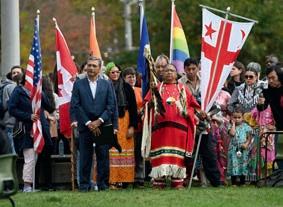
Update your address at alumni.dal.ca/ update or email alumni.records@dal.ca
See the latest events listings: alumni.dal.ca/events

Dal alumni and faculty share their books, television shows, films, webinars, and podcasts.
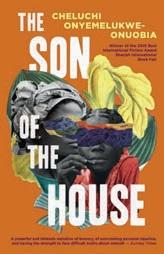
by Cheluchi OnyemelukweOnuobia (LLM’04, JSD’10)
In this 2021 Scotiabank Giller shortlisted novel, two Nigerian women of very different means are kidnapped and held captive together. As they await their fate, the two tell each other the stories of their lives, and in the telling, recount 40 years of Nigerian womens’ experiences.
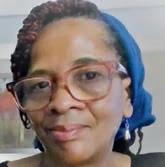

Research Nova Scotia, in a podcast that features some of the fascinating research undertaken in the province, hosts Dr. Tim Webster (PhD’06) as he discusses how he uses LIDAR technology to accurately map coastal zones to depict areas of future flood risk.
Using a variation on the ghazal, a traditional Persian poetry form, Wheaton explores, among other themes, human and environmental states of vulnerability and precarity, her working class upbringing, and the beauty of the natural landscape around her Tantramar home.

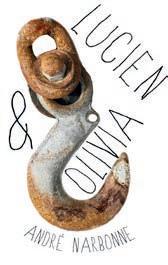 by André Narbonne (MA’99)
by André Narbonne (MA’99)
A marine engineer and a philosophy student discover their quirks are compatible in 1980s Halifax. This satirical novel pokes holes in the transactional nature of human relationships that can sometimes take hold when politics are involved. Lucien and Olivia was longlisted for a 2022 Giller.
Presented by the MacEachen Institute for Public Policy and Governance, this panel discussion brings together members of the African Nova Scotian community to explore how to transform the relationship between the community and the provincial government. The discussion can be watched in full on YouTube.
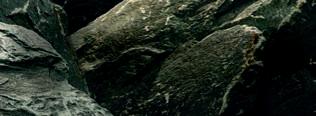




Dalhousie University is a place for those who want to have it all.
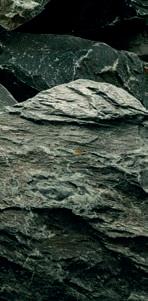



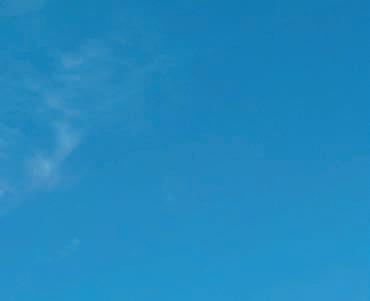


Dal offers the best in groundbreaking research with world-changing professors and over 200 programs. Students get hands-on experience tackling real-world problems, all while being part of a supportive community in one of the most naturally stunning places in Canada.


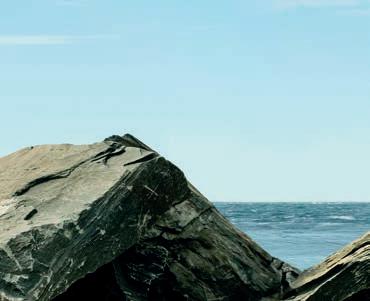
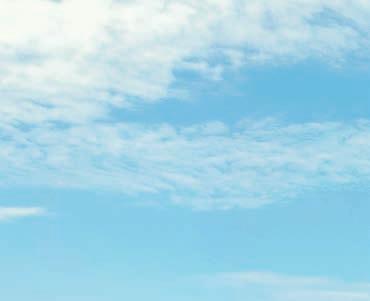

It’s all here, at Dalhousie University.

of ’80) operates Sunni Knoll Farms in Shubenacadie, N.S., with his wife, Angela, son, Joey, and daughter-in-law, Sarah. He installed two robotic DeLaval VMS milkers last year and embraces other technologies to help run things at his dairy farm.
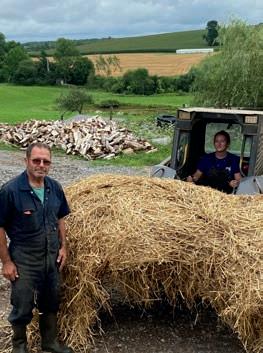
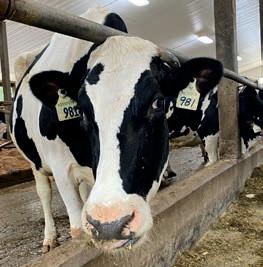
6 A.M. I’m in the barn checking on the cows. It took a few weeks for them to adjust to robotic milking; now, they mostly take themselves and line up when they want to be milked at any time, day or night. This morning, my iPhone app tells me four cows (out of 120) weren’t milked in the last 12 hours (all have a microchip in their outer ear). They’re overdue and need an escort.
7 A.M. Morning chores include hosing down the milkers and pushing feed to where the cows can reach it. I step around the automatic manure scraper, and enjoy seeing that a cow who gave birth last evening is content and healthy.
8 A.M. Time for breakfast with Angela, then a team meeting with Joey and Sarah, who work and live here with their three kids—my grandkids are the fourth generation of van de Riets at Sunni Knoll Farms—plus our two staff.
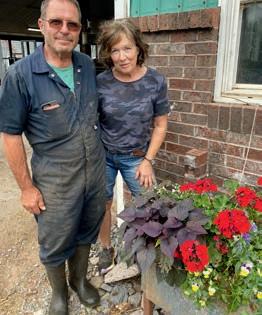
9:30 A.M. The tanker arrives to retrieve our milk. Our cows produce 8,600 litres every other day.
10 A.M. I do minor repairs around the farm, while Joey harvests our grass for feed. Joey is the crops guy, Sarah’s great with the animals and I’m more mechanic. I take a quick run into town to pick up a patched flat tire.
12 P.M. I take a 30-minute nap after lunch then enjoy a game of cribbage with Angela, who’s also a Dal Agriculture grad. I walk through her beautiful flower gardens on my way back to the barn.
2 P.M. I’m in the office updating my books (dairy farms are audited every two years) and talking online with other farmers who have robotic milkers. I’m also continually learning about things like cropping practices that reduce emissions and carbon, animal nutrition, soil health, and maximizing yields. (Sunni Knoll Farm wins awards for maximizing crop yields.)
5 P.M. I break for supper then ride my bike to the village for some cardio. In winter, I ski and curl for extra exercise. Sarah and Joey will be doing the 9 p.m. barn check so I can relax and read the news before bed. Automation has brought structure to my work life. After farming mostly manually for 40 years, the fact I can now mostly walk away from work at 5 p.m. is life changing.
TOP:
MIDDLE: Cow 981 is ready for her close-up
BOTTOM: John and Angela take a moment to stop and smell the flowers
Shannon
brings a strong social justice lens to her work in climate resilience and environmental sustainability: “I’ve always been fired up by things that seem unfair.”
SHANNON MIEDEMA (MES’04) is a
climate leader focused on less, not more.
director of the Environment & Climate Change team for the Halifax Regional Municipality, Shannon Miedema is driving implementation of HalifACT, the city’s climate action plan. Its goal? Net-zero emissions by 2050.
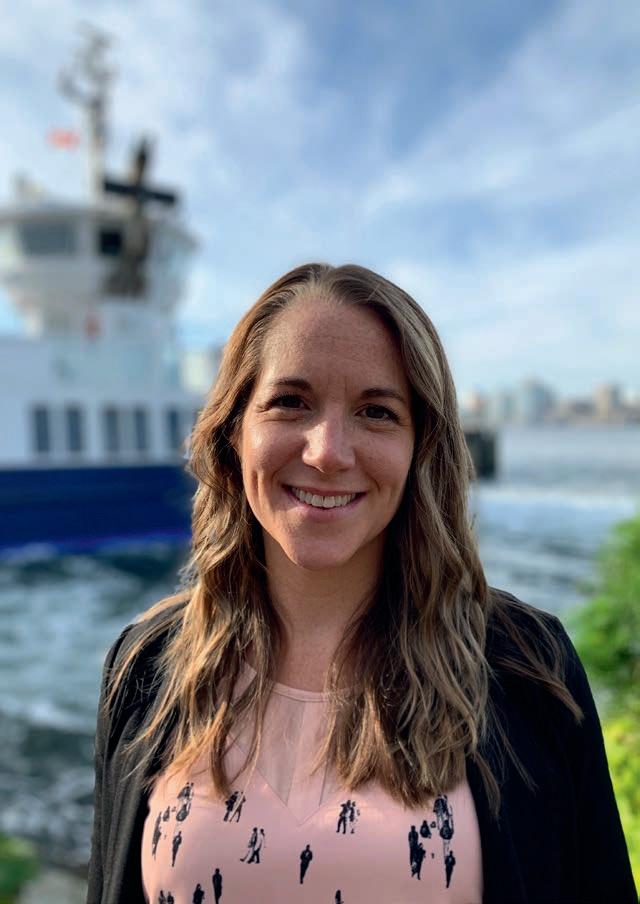
It’s ambitious, but Miedema says the city doesn’t have a choice. “It’s what we have to achieve. The science tells us it is not optional.”
Miedema has been a strong advocate for the environment since childhood. Her commitment to protecting the natural world intensified during high school and her undergrad, and brought her to Dalhousie where she completed a Masters in Environmental Studies under ecological economist Dr. Peter Tyedmers.
While there’s great variety in her job, Miedema breaks it down into three main functions: adaptation or “climate resilience” (safeguarding infrastructure, people,
and places against climate impacts), mitigation (driving down emissions, renewable energy, and energy efficiency in buildings and transportation), and environmental sustainability (watershed management, wetland protection).
A tangible example of how her work comes to life is Halifax’s recent acquisition of a refrigerated truck. It will be both a mobile food market and available during power outages—on the rise due to extreme weather events— to drive through communities facing food insecurity, allowing residents to store food from their freezers inside the truck until power is restored.
Miedema consistently brings a strong social justice lens to the work, saying, “I’ve always been fired up by things that seem unfair.” The inequities laid bare by COVID and environmental racism motivate her further.
She says while her work is full of challenges to overcome, it’s also her dream job. It’s highly collaborative and requires building relationships with partners like Dalhousie. Dal’s Office of Sustainability and departments like Facilities Management and Ancillary Services have been preparing the university to meet the challenge of net-zero emissions by 2050 by incorporating energy sustainability into policy, planning, projects, and operations for more than a decade.
Miedema also partners with Dal’s Faculty of Planning and Architecture on climate risk mapping and sea-level rise visualization, and to help deliver a public lecture series on climate change. She guest lectures and consults with Dal’s Centre for Water Resources Studies on ways to ensure water quality and ecosystem health, plus she works with ShiftKey Labs, which supports students developing innovative solutions to important local and global programs.
The work all carries a sense of urgency for Miedema, but she remains hopeful. “The window of time is narrowing but we do have an opportunity to get this right,” she says. —Alison DeLory
Since meeting at Dalhousie over 50 years ago, DR. THERESA CHIANG and her late husband Dr. Wah Jun Tze have helped children around the world live healthier and happier lives.



A


passion for improving health outcomes for children inspired Dr. Theresa Chiang (BSc’61, DDS’65, MSc) and Dr. Wah Jun Tze’s (BSc, MD’65, FRCP, OC) earliest gifts. Their ability to turn ideals into actions has created a legacy of better health care and had a profound impact on thousands of lives ever since.
Thanks to Dr. Chiang’s recent $1 million gift, the new Tze/Chiang Paediatric and Adult Special Needs Clinic at Dalhousie’s Faculty of Dentistry will be an exciting next step in their legacy and an opportunity to honour Dr. Tze, who died in 2001.
Dr. Chiang and Dr. Tze’s journey of giving began in the mid-1980s, when Dr. Tze travelled to Guangzhou with a delegation aiming to “twin” the Chinese city with Vancouver. “He visited the Guangzhou children’s hospital and found a dire need for medical equipment and supplies, and assistance in medical knowledge and technology,” says Dr. Chiang.
Determined to make a difference, the couple created the Canada China Child Health Foundation (CCCHF) in 1987. Thanks to their remarkable ability to spur everyone from health professionals to CEOs to world leaders into action, Dr. Tze and Dr. Chiang’s foundation
has organized over 20 major programs in China, including twinning of all children’s hospitals in Canada with major children’s hospitals in China, and initiating neonatal screening programs, exchange programs, medical training, the transfer of medical equipment and the establishment of children’s oral health programs. The CCCHF also created “Child Friendly Centers” to help China’s vast rural areas access primary health care for children; more than 100 Centers now improve paediatric health throughout the country.

Dr. Chiang’s goals were to help children and serve urgent needs while advancing paediatric care and education. Her generous gift to Dalhousie’s Faculty of Dentistry will do exactly that: two state-of-the-art surgical suites will address the shortage of specialized facilities to provide care to adults with special needs and waitlists for paediatric dental surgery in Nova Scotia. The suites will also benefit students and faculty, who will gain valuable learning and research opportunities working alongside the highly qualified paediatric dentists and specialists operating in the suites.
“An optimal outcome requires the coordination of paediatric dentistry, anesthesiology, hospital interdepartmental support, adequate facilities and equipment, as well as support from government and the dental society,” says Dr. Chiang, who helped establish a similar program in Vancouver. “I can envision the success of this program at Dalhousie because of the multi-level support Dean Ben Davis was able to obtain. We hope to expand this kind of program to other provinces in the future.” —Jodi Reid
The Zen E-bikes website is currently taking orders.


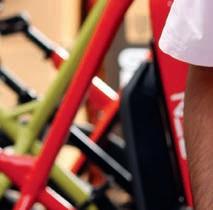
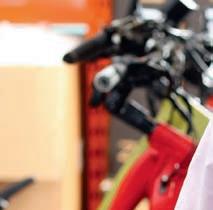
“Our first-generation battery pack already lasts twice that of a typical e-bike battery pack. And we want to be the first company to commercialize Dr. Dahn’s million-mile battery for two-wheel e-mobility. It would last 10-12 years and reduce thousands of tons of CO2 emission.”
RAVI
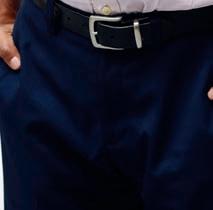
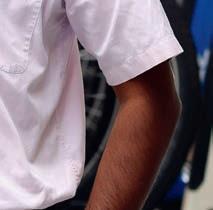


and his partners at Zen Electric Bikes are planning to disrupt the way we commute and maybe even the way we power our lives.
INNOVATION: Electric bikes are the ideal alternative for urban commuting. Their environmental cost is small, they support physical and mental health and they’re fun to use. The downside? Most e-bike batteries only last two to three years. Zen E-Bikes are different. Thanks to battery technology developed by the Jeff Dahn Research Group, where Dr. Kempaiah is a post-doctoral fellow, Zen battery packs have double the endurance of the competition. And soon, they’ll last even longer.
FOUNDATION: Like Dr. Kempaiah, who has a PhD in Li-ion battery science, Zen’s co-founders are enthusiasts and experts: a principal engineer with ten years’ experience in EVs, and a tech solution architect. Backing them up is an advisory board that includes Dr. Dahn, NSERC/Tesla Canada Industrial Research Chair, and Dr. Chris Burns, CEO of NOVONIX.



INSPIRATION: “In 2013, I was doing my master’s and I was adamant that I should not use a gasoline car just to transport me the three miles to campus,” recalls Dr. Kempaiah. “I got an e-bike and thought ‘This is game-changing technology.’ I wanted to bring more attention to it. That’s when I did the Guinness Record ride.” Dr. Kempaiah holds the Guinness World Record for longest journey on a motorized bicycle: 8,209.10 km over 34 days across twelve US states. “It only cost me $6 in electricity! That convinced me that e-bikes are the future. So, I did my PhD working on batteries.”

WHY IT MATTERS: “Long-life batteries for electric mobility—that’s our goal. A battery that lasts 10 to 12 years means less e-waste and better sustainability,” says Dr. Kempaiah. But their ambitions don’t stop there. “The next step? Let’s say you have two e-bikes, they could become an electrical backup for your home during a power outage. In places where the electrical grid is unreliable, you can ride your e-bike during the day and when you get back home, use it to power your lights and radio and other things.” —Stefanie Wilson

CHRIS BURNS (MSC’11, PHD’15) has a finger on the pulse of clean tech.

Dr. Burns is encouraged by the massive regulatory changes and government investment he is seeing in the field in North America.
“The US set aggressive targets where to qualify for electric vehicle rebates, by 2028, 100 per cent of the value of the battery’s components must be manufactured or assembled in North America—that’s incredible considering that today almost the entire supply chain currently rests in Asia,” he says. “Governments are incentivising industries around the world to grow a domestic supply chain, particularly in the United States, but the US still needs to do more to catch up with China. NOVONIX currently has plans to bring on 150,000 tonnes of synthetic graphite supply by 2030, but this would still only represent 2 per cent of global demand.”
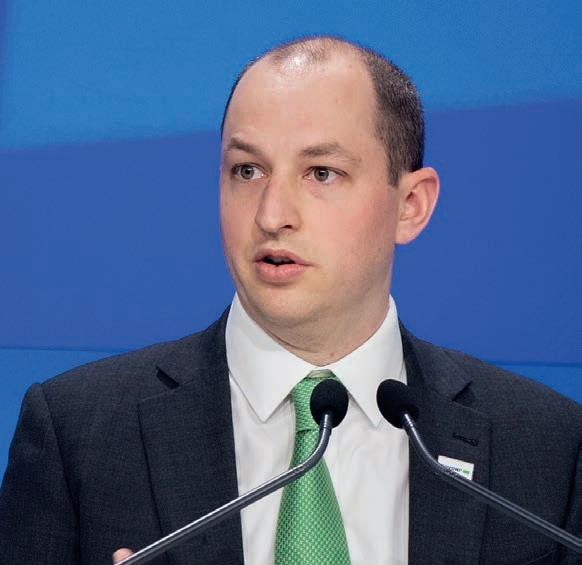
Thanks to Dr. Burns’ prescient timing, NOVONIX is well ahead of the trend. In 2017, the company moved toward producing synthetic graphite in its new plant in Chattanooga, Tennessee—one of the first companies in North America working to manufacture this key ingredient for longer battery life. Producing synthetic graphite in North America with cleaner process technologies could decrease its global warming potential by as much as 60 per cent compared to Asian-made synthetic graphite as demonstrated in the company’s life cycle assessment conducted earlier this year.

was while studying at Dal in Jeff Dahn’s battery tech research team that Chris Burns (MSc’11, PhD’15) discovered his passion for the critical role lithium-ion batteries would play in the transition of society to clean technology.
It
“When I started working with Jeff Dahn, I saw the opportunity to make a real societal impact that people could understand,” Burns says. That idea took root, and Dr. Burns’ journey as a clean tech pioneer began.
Today, Dr. Burns is the CEO of NOVONIX, a leading supplier of battery materials and technologies driving the innovation required for a more sustainable future. He co-founded the company in 2013 while working on his PhD, when he recognized the tremendous potential and appetite for battery technology to help reduce the world’s carbon footprint. With NOVONIX, Burns is bringing battery technology to market that supports longer life batteries, higher energy efficiency, and a smaller environmental impact.
“We saw the massive change coming to renewable energy generation and storage, and we invested in the development of cleaner process technology,” says Dr. Burns. “There are very few companies in our space outside of Asia—other people saw risk where we saw opportunity.”
That opportunity is paying off, with major energy and auto companies now eyeing NOVONIX technologies, and some already investing heavily in the company, such as Phillips 66, which invested US$150 million last year. US President Joe Biden further recognized the company’s potential this fall, announcing a US$150 million Department of Energy grant to NOVONIX.
Now, Dr. Burns’ desire to do work that would have a direct and positive impact on people’s lives feels like it’s coming to fruition.
“Our goal is to one day soon be able to point at an electric vehicle and say, ‘Our materials are in that car.’ That’s the kind of impact that motivates us every day, and that’s very exciting.” —Jodi Reid
Meet CAROLINE MERNER (BA’17), the first Dalhousie alum to graduate as a McCall MacBain Scholar.

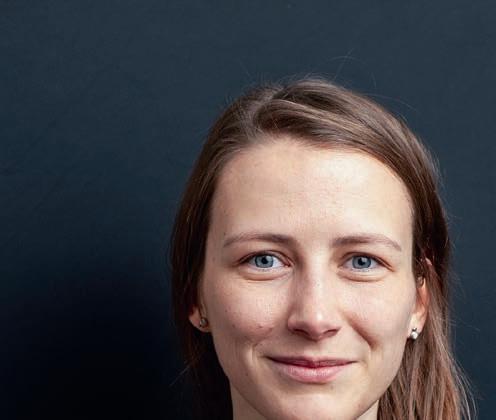
scholarships around the world. I grew an incredible network of ambitious changemakers, which is invaluable!
Q. How did Dalhousie influence the path you’ve taken?
A. My time at Dal in Environment, Sustainability & Society and International Development Studies shaped who I am. I developed my understanding of climate change as a collective problem that requires systems change and formed the skills I use every day as a leader and organizer for climate justice.
Q. Why are you passionate about climate action?
A. Climate change is the greatest threat of our generation. It is an issue of injustice since those most affected contribute the least to the problem.
After graduating from Dal, my friend Marina Melanidis and I started a program to engage youth in climate action. It evolved into the global organization Youth4Nature, mobilizing young changemakers to lead for nature and climate. While the climate crisis is daunting, mobilized community is powerful and joyful! We can all play a role, as facing the climate crisis requires collective action.
Q. What inspired you to decide to return to school?
A. I decided to do my Master of Public Policy to grow a foundation in policymaking and be a stronger climate advocate. The lessons from this intensive one-year program will enable me to be a better advocate to decision-makers or become a future decision-maker.
Q. What are your plans after graduation?
“Climate change is the greatest threat of our generation. It is an issue of injustice since those most affected contribute the least to the problem.”
erner is part of the initial group of 20 students to receive this prestigious scholarship, which provides full funding to pursue a master’s or professional degree in all disciplines at McGill University and access to mentorship, an interdisciplinary learning program and a global community. The scholarship recognizes exceptional students who aspire to lead with purpose and make a positive impact in the world. Merner recently completed her Master of Public Policy at McGill and spoke to Dal Magazine about her experiences.
Q. What are some highlights from your McCall MacBain Scholar experience?
A. The friendships formed with fellow cohort members and the supports built into the scholars’ program—a life coach, mentor, and leadership session facilitators were a few of the highlights. I also travelled to New York for the Global Fellowships Forum to meet alumni from
A. I am the new Project Manager for the Future of Climate Cooperation, based at the Blavatnik School of Government at Oxford University and in partnership with the ClimateWorks Foundation. I work at the intersection of climate policy, advocacy, and engagement. I also plan to continue my involvement with Youth4Nature, and I’ll volunteer on the board of the MakeWay Foundation, an organization that builds partnerships and solutions to help nature and communities thrive together.
Q. Do you have any advice for potential applicants to the McCall MacBain Scholars program?

A. Trust yourself and tell your story. I believe the scholarship is looking for leaders with integrity and potential to grow. If you want to make a difference in your community, whether locally or globally, this program is for you. Be open to sharing and being fully yourself!
Read an expanded interview with Caroline at Dal.ca/dal-magazine.
“It’s rewarding to see the gardens build up year on year. If you’re just going into someone’s personal yard, you put in an installation and you never see it again. Here every year, you can see it evolving and that’s quite a nice sight.”

DEREK
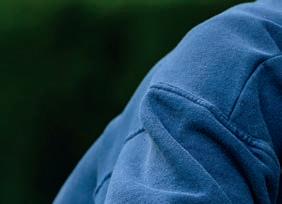


HIS BACKSTORY: Derek Pearson was a groundskeeper at an agricultural college in England in the 1980s. After taking evening classes in creative gardening and countryside management, he moved to Canada and did the Master Gardener Training Program through the Faculty of Agriculture’s Extended Learning. Now he is one of four gardeners in Dalhousie’s Facilities Management Grounds Crew in Halifax—each responsible for making their own part of Dal’s three Halifax campuses—comprising 79 acres, the size of around 20 city blocks—beautiful and camera-ready.
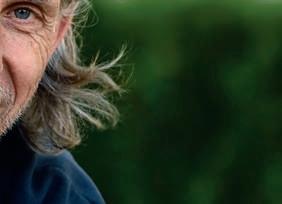
HIGHLIGHTS: For the past 11 years, Pearson has spent many of his days in the most-photographed areas on campus—the Studley Quad and Sherriff Hall (backdrop to many weddings). There he is not only responsible for the day-to-day upkeep but he’s also the creative impetus behind the look of the grounds.

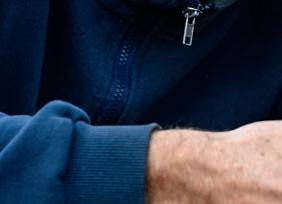
Pearson says the weather, the seasons and the needs on campus dictate the kind of treatment each area gets. “Once you get used to a place you get the feel of it. While you’re weeding, ideas pop into your head and you think that a particular area isn’t looking as good as it could be. You recognize the areas that could be improved,” Pearson says. “And sometimes you just want to try something just for the sake of it, for the fun of it.”
With convocation early in spring, the team relies on perennials and bedding plants to provide pops of colour. Once that is over and the weather has turned warmer, the real creativity begins. Pearson offers the example of gardening around older structures like the Chemistry Building and the Hicks, where he goes for a cottagey look. It appears as if the gardens on either side of the main doors of both buildings are symmetrical. Look more closely, however, and you will notice slight differences to accommodate for the difference in sun and shade.
Pearson is most proud of a crevice garden now thriving with succulents outside the Chemistry Building and ground cover running from Killam Library to the Steele Ocean Science Building. “You just squeeze small plants in but the roots will spread out underneath and in between the rocks. It’s a really hot, sunny area but the little seedlings like the warm weather and they’re just thriving.”
WHY I DO IT: “It’s a great job if you like to be outdoors, which I do.” Pearson says. “We’re encouraged to be creative and bring ideas, and people listen to you. It’s a very supportive environment.”
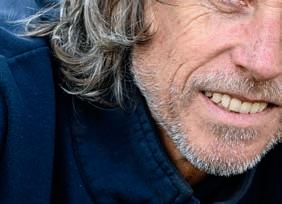
Even in winter when Pearson, like the rest of the grounds team, spends the majority of his time shovelling snow and chipping away at ice, the promise of another year’s growing season makes it all worthwhile.
—Mary Jane Webber





or the past three years, Dalhousie donors have rallied to help students achieve greater food security through their support of the university’s Giving Tuesday initiative. Giving Tuesday—a global annual day of giving that takes place each year in late fall—is a time when charities, companies, and individuals come together to rally for favourite causes.
Since 2020, Dalhousie has participated in Giving Tuesday by partnering with other Nova Scotia post-secondary schools and the J & W Murphy Foundation on The Food Security Project to raise funds to improve food security for the province’s university and college students.

It was Lisa Murphy, codirector of the J & W Murphy Foundation, who proposed that Dal take the campaign provincewide in 2020, so more postsecondary students could get the help they needed to eat well. “To have played any part in igniting what has become a provincewide movement to promote food security on campuses is
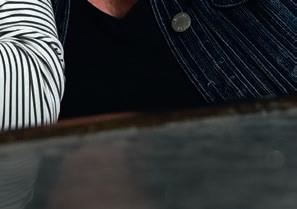
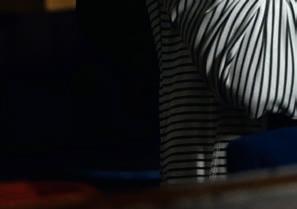
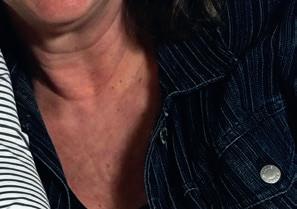

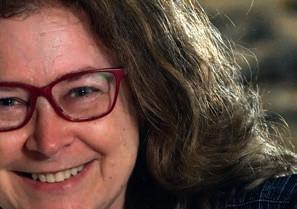



deeply humbling,” Murphy says. “Student-led programs are wellpositioned to make a difference, but they can meet the need so much more effectively with our collective support.”
Supply chain issues impacting food availability and costs caused by the COVID-19 pandemic have exacerbated food insecurity for students. Inflation rates are also at an 18-year high. And the cost of groceries has increased by an estimated 9.7 per cent since April 2021, according to Statistics Canada data.







Here at Dal, the goal has been to raise funds to fill the shelves of the Dalhousie Student Union Food Bank and the Agricultural Campus Food Pantry. Donors were quick—and happy—to help, raising a combined total of more than $150,000 on Giving Tuesdays in 2020 and 2021.
“We are grateful for the generous support of Dalhousie’s donors, who have shown up for a third Giving Tuesday to help promote food security for students who need it,” says Kimberly McDonald Winsor, director of Annual Giving at Dal —Allison Barss
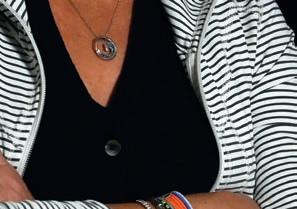



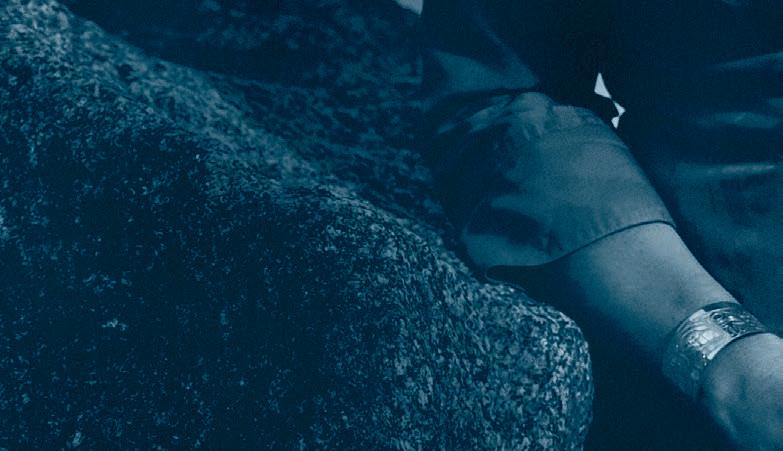


 By Ryan McNutt
By Ryan McNutt




expectations for a life in research and academia didn’t start in a classroom or a lab. They were formed at the dinner table.
Her family’s dinner table in Halifax, to be more precise. There, her mother Masha—a biologist—and her father Peter—a Canadian political historian and renowned Dal professor—would frequently invite faculty
colleagues over for drink, dining, and discourse. And from a very young age, Anya soaked it all in—minus the wine, of course.
“We had philosophy professors, economists, chemists, people from across the Dal community,” she says. “My father was one of the first in his family to get a university degree. So, for him, it was the joy of just being part of an intellectual community, where you could talk ideas. There was a lot of laughter—they took themselves seriously but not too seriously, and it rarely became didactic or fierce. It was a truly rich experience.”
Those memories stuck with the younger Waite as she pursued her own academic journey—not plowing into the study of parliaments and politics like her father, but diving into the world below the ocean waves, one of coral and currents.


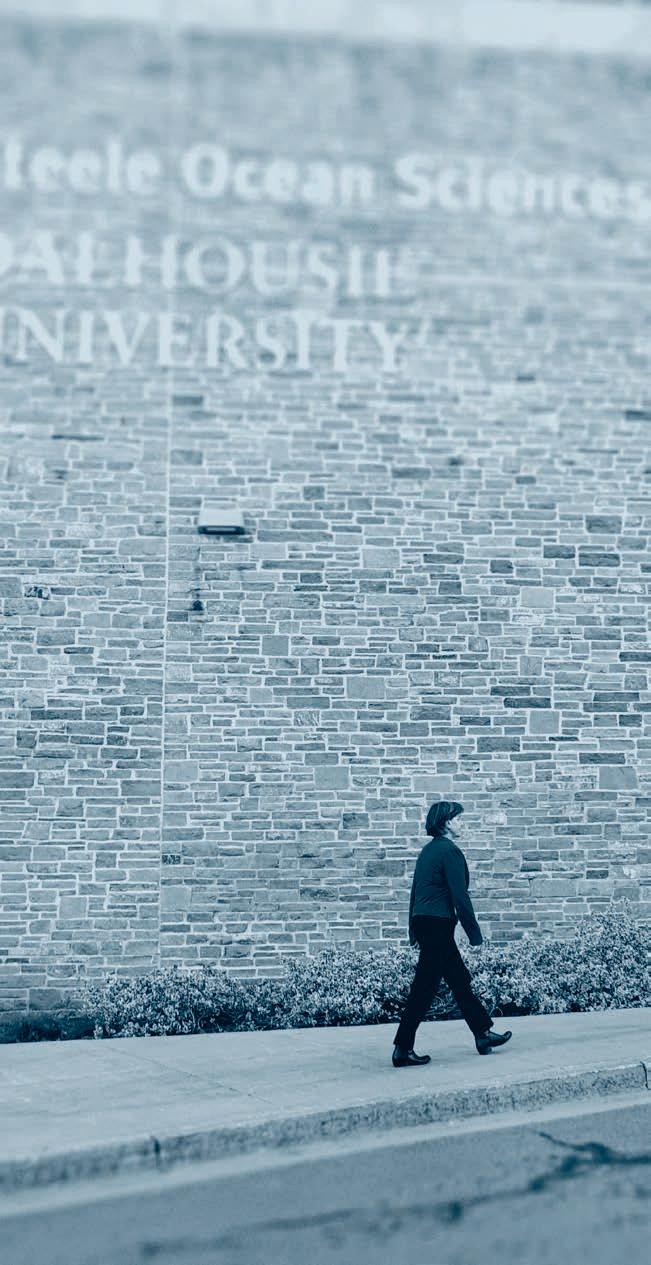
After years as an acclaimed scientist and global community-builder in oceanographic research, Dr. Waite has found her way back to Halifax and Dalhousie, becoming the university’s associate vicepresident research (ocean) and scientific director and CEO of the Dal-led Ocean Frontier Institute. Now, she’s the one hosting the table, so to speak, welcoming experts from across disciplines to apply their intellectual rigour and innovative thinking to some of ocean research’s greatest challenges.
“It really isn’t an overstatement to say Anya is dedicated to saving the world,” says Dr. Alice Aiken, Dalhousie’s vice-president of research and innovation and the one who recruited Dr. Waite to her current role. “She knows how important the ocean is to our climate future. From oceanographers and atmospheric scientists to legal and Indigenous scholars, she’s bringing together researchers uniquely qualified the world over to tackle the problem. And it’s only because of her excellence as a researcher and passion as a leader that she’s able to achieve that.”
“From oceanographers and atmospheric scientists to legal and Indigenous scholars, Dr. Waite is bringing together researchers uniquely qualified the world over to tackle the problem. And it’s only because of her excellence as a researcher and passion as a leader that she’s able to achieve that.”
 —Dr. Alice Aiken
—Dr. Alice Aiken
to where Dr. Waite is now has been anything but straightforward—more akin to the tossing of a current that, chaotic as it may seem in the moment, ended up exactly where it was supposed to be headed.


She started as a Dal music student before switching to a combined honours in English and Biology, unwilling to choose between the arts and the sciences. Over time,
though, she was increasingly drawn to the natural world, doing an honours research project with biologist Bill Freedman and spending her summer tramping through rural Nova Scotia studying how forests regenerate after clear cutting. At that time, she was also volunteering with a marine ecology course and had the opportunity to do work on a research ship.
“And I immediately fell in love with being at sea,” she recalls. “The steel-toed boots, the hard hat, the whole thing. It was the teamwork on the ship that really got me— it’s amazing, everyone supporting each other, working really hard and pulling together.”
She’d spend the next couple of decades searching for ways to combine that sense of teamwork with the intellectual curiosity she valued so much. It wasn’t always easy. After completing her PhD in oceanography at the University of British Columbia, she secured a prestigious postdoctoral fellowship—and found the experience completely demoralizing.
“I grew up with the view that the whole point of being an academic is that you have good arguments, and you bring clear-headed thinking and creativity into these discussions. And instead, what I found was a community that was kind of seized up with the need to bring in big grant money and being worried about sharing ideas in case the lab next door might take them.”
It wouldn’t be the last time she found herself in a dispiriting career situation. Years later, as an environmental engineering professor in Perth, Australia, a leadership turnover led to her courses being dropped, her teaching load tripled, and coming face-to-face with the sexism that all too often has followed women in the sciences. She doubted her academic self-worth, her leadership, her research. It took escaping to a change of scenery in Germany to realize the problem wasn’t her.
“It was almost as if I went from pariah to princess,” she says with a reflective laugh. “Suddenly I was a female leader of a department which had never had a female leader. I was voted as the top professor to lead the Scientific Council of the whole organization. I got to travel around Germany championing ocean research for the Helmholtz Institutes, influencing the scientific direction of an entire country.”
Ever since, she’s been lucky to work with female leaders she calls “the wind at my back.” She’s steadfast on her commitment to ensuring debate and discourse is fair, collegial, and intellectually empowering. And the experiences inspired advice she often gives to young women entering a career in research: don’t neglect your politics.
“Map your landscape. You’re never above the politics. Map the mountains. Map the passes. ‘Here be dragons.’ Who are the gatekeepers? Ask those questions about the political landscape you’re working through because you may have to dodge someone, you may have to climb over a pass. All those things are necessary to succeed.”
Dr. Waite returned to her alma mater at a time when Dal is truly making waves in the field.
Ocean research initiatives hosted at Dal—like the marine-life surveying Ocean Tracking Network and ocean-risk assessing Marine Environmental Observation, Prediction and Response Network (MEOPAR)—are linking Dal experts with like-minded colleagues and institutions around the globe. The university’s research strategic direction places “sustainable ocean” as one of its five central pillars, with an ocean research strategy (launched in 2021) that positions Dal as “a global leader in solving ocean challenges through excellence in research, graduate education and innovation.”






part of that vision is the Ocean Frontier Institute (OFI), a $220-million partnership led by Dalhousie, Memorial University of Newfoundland, and the University of Prince Edward Island. Launched in 2016, the institute funds and supports research focused on the North Atlantic and Canadian Arctic Gateway, from understanding atmosphere-ocean interaction to developing sustainable, competitive ocean technologies and solutions. Since taking over as OFI’s scientific director in 2018, Dr. Waite has worked to enrich the institute’s activities—growing multidisciplinary research, strengthening Indigenous engagement, and pushing boundaries into new frontiers. She cites the Sustainable Nunatsiavut Futures project as a great example: a collaboration that uses both communityengaged research and scientific methods to co-produce knowledge on how climate change impacts Northern communities that depend on marine resources.



“Here’s a type of project that wouldn’t necessarily happen without OFI—or if it did, it probably wouldn’t happen the same way,” she explains. “It’s probably the biggest project of its kind, blending traditional western science and Indigenous knowledge in a way that focuses not only on traditional academic metrics, like papers, but on how well this research aligns with the local communities. How is the conversation going? That’s critical.”
Among the conversations Dr. Waite is most focused on right now is one that might be her largest to date: a proposal for a new Dal-led research collaboration called Transforming Climate Action. The project, in partnership with the Université du Québec à Rimouski, Université Laval, and Memorial University, is seeking funding from the Canada First Research Excellence Fund at a scale larger than anything in Dal’s history. Its vision: to provide critical data and insight to Canada and other countries about the critical role the ocean plays in responding to and managing global climate change—perhaps the most existential challenge our society, and our planet, is facing.
“The ocean is not well understood as a climate actor, by policy makers or the broader public,” explains Dr. Waite. “We think of it as a victim—‘the poor ocean, it’s hurting under climate change’—but the ocean actually controls climate. It’s a carbon sink. And if countries like Canada are going to meet our global climate targets, if we’re going to achieve net-zero carbon emissions, what we’ll need is a significant push for ocean observation, making sure we fully understand the ocean’s carbon cycles and working to better predict the future climate.”


The project is already attracting support and partners around the world as it ramps up, and Dr. Waite is proud that the spirit of collegiality and collaboration that’s been foundational to her career is all over the proposal.
“We’re creating a space for researchers to talk ideas, where their ideas are going to be valued. We don’t always get it right, but we try. The whole aim of the proposal was to create a space for intellectual excitement, and we want to continue to do that going forward. And we’re really looking to engage the next generation of researchers to take charge of this and push it forward.”
Over the longer term, she hopes to see the next generation of scientists fully at the helm.
And where will that ultimately leave her? “My hope is that would be that I will always contribute to a constructive, active dialogue: ‘Let’s have that exciting conversation. Let’s talk science. Let’s have the inspirational discussion over a glass of wine that’s going to help envision the next transformative action.’”
Learn more about the Transforming Climate Action project at transformclimateaction.ca




That’s why there’s insurance.
That’s why there’s insurance.
That’s why there’s insurance.
Unexpected events are a part of life. And they seldom come with a “heads up” warning (wouldn’t that be great?). So how can you be prepared for something you don’t see coming?
Unexpected events are a part of life. And they seldom come with a “heads up” warning (wouldn’t that be great?). So how can you be prepared for something you don’t see coming?
Unexpected events are a part of life. And they seldom come with a “heads up” warning (wouldn’t that be great?). So how can you be prepared for something you don’t see coming?
With Manulife insurance plans. They can help protect you and your family against life-changing events that can happen at any stage of your life. Choose from Health & Dental, Term Life, FollowMeTM Health and more. Get your free quote today.
With Manulife insurance plans. They can help protect you and your family against life-changing events that can happen at any stage of your life. Choose from Health & Dental, Term Life, FollowMeTM Health and more. Get your free quote today.
With Manulife insurance plans. They can help protect you and your family against life-changing events that can happen at any stage of your life. Choose from Health & Dental, Term Life, FollowMeTM Health and more. Get your free quote today.
Protection for what you don’t see coming.
Get a quote today. Call 1-888-913-6333 or visit us at Manulife.com/dalhousie
Underwritten by
Underwritten by The Manufacturers Life Insurance Company (Manulife).




































































Manulife, Stylized M Design, Manulife & Stylized M Design, and FollowMe Health are trademarks of The Manufacturers Life Insurance Company and are used by it, and by its affiliates under license. Available to Canadian residents only. © 2022 The Manufacturers Life Insurance Company. All rights reserved. Manulife, P.O. Box 670, Stn Waterloo, Waterloo, ON N2J 4B8.
*Conditions, limitations and exclusions may apply. See policy for full details.
Accessible formats and communication supports are available upon request. Visit Manulife.ca/accessibility for more information.
The Manufacturers Life Insurance Company (Manulife). Manulife, Stylized M Design, Manulife & Stylized M Design, and FollowMe Health are trademarks of The Manufacturers Life Insurance Company and are used by it, and by its affiliates under license. Available to Canadian residents only. © 2022 The Manufacturers Life Insurance Company. All rights reserved. Manulife, P.O. Box 670, Stn Waterloo, Waterloo, ON N2J 4B8. *Conditions, limitations and exclusions may apply. See policy for full details. Accessible formats and communication supports are available upon request. Visit Manulife.ca/accessibility for more information.
Underwritten by The Manufacturers Life Insurance Company (Manulife). Manulife, Stylized M Design, Manulife & Stylized M Design, and FollowMe Health are trademarks of The Manufacturers Life Insurance Company and are used by it, and by its affiliates under license. Available to Canadian residents only. © 2022 The Manufacturers Life Insurance Company. All rights reserved. Manulife, P.O. Box 670, Stn Waterloo, Waterloo, ON N2J 4B8. *Conditions, limitations and exclusions may apply. See policy for full details. Accessible formats and communication supports are available upon request. Visit Manulife.ca/accessibility for more information.




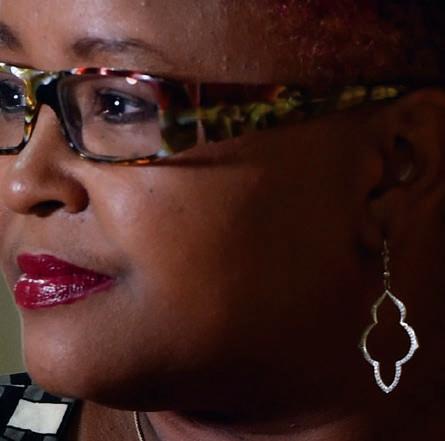
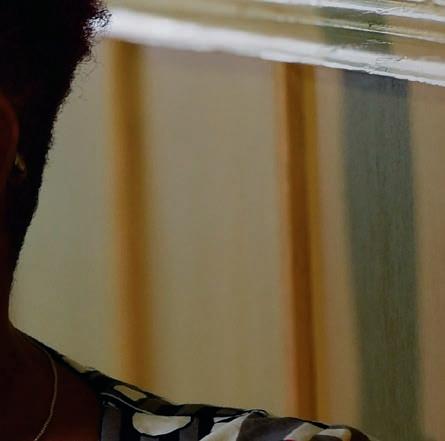
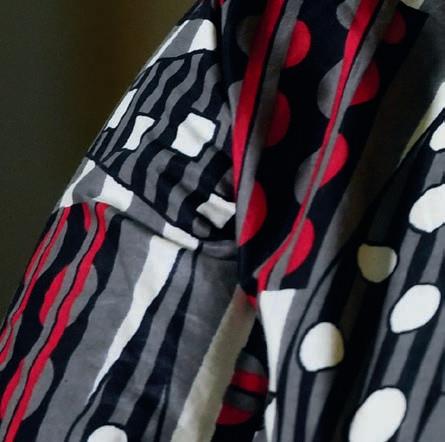

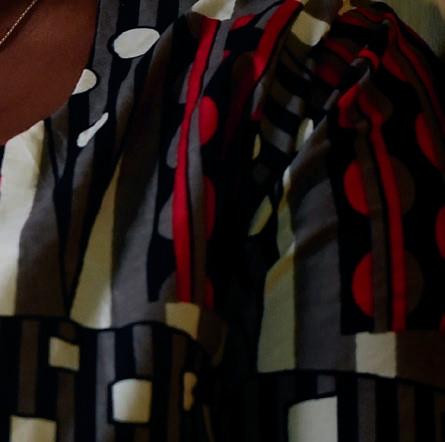



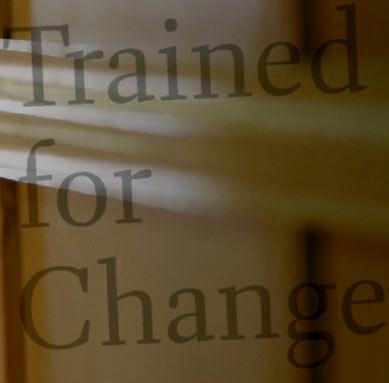 by Kate Rogers
by Kate Rogers
That was what she was told. Which may not have seemed unusual in pandemic times.

But Dr. Barb Hamilton-Hinch recalls staring in disbelief at two white men walking together in the direction of care, while she had just been informed she would not be permitted to accompany her mother, who was very ill at the time. Why then, was the man in front of her allowed to accompany his friend or family member? When Dr. Hamilton-Hinch asked if she was being treated differently because of the colour of her skin, she was immediately told she could join her mother.
Dr. Hamilton-Hinch is the assistant vice-provost of equity and inclusion at Dalhousie. She says it shouldn’t be the responsibility of the patient to continue to educate people on the needs of diverse populations.
“I shouldn’t have to use my doctor title to get ‘better’ care,” she says.



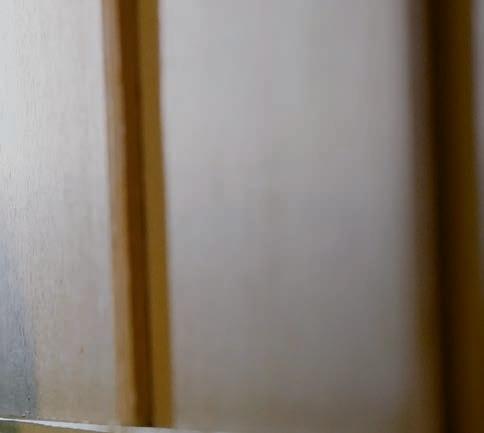
“I think that speaks volumes about the change that needs to happen.”
Change is rarely easy, and the first step involves clearly stating the problem: racism exists in health care and has disproportionately negative health outcomes for disadvantaged groups. The next step is to increase understanding. What are the barriers that historically excluded populations face when trying to access health care? What is preventing marginalized groups, such as those in the LGBTQ+ community, people with disabilities, Indigenous, and African Nova Scotian communities, from getting the support they need?
In Dalhousie’s faculties of Medicine, Health, and Dentistry, work is underway to not only increase the diversity among health-care practitioners, but also to properly train students entering those fields to provide unbiased and inclusive care to their patients.
“Only patients are permitted because of COVID-19.”
A diverse health-care system opens doors for everyone. Here’s how we get there.
TOP: Dawn Googoo, L’nu Nurse Initiative lead, chair Indigenous Health Nursing
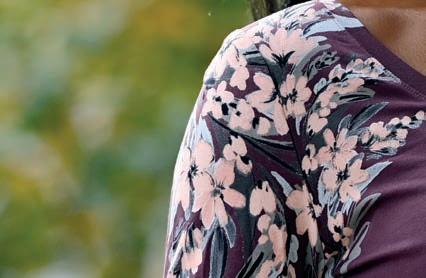

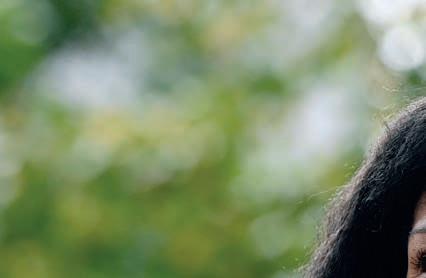


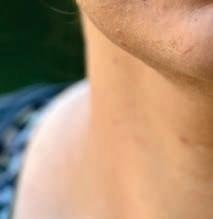

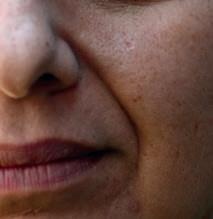
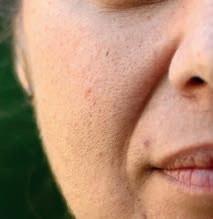
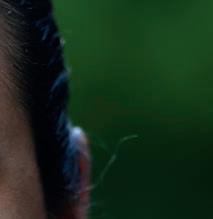
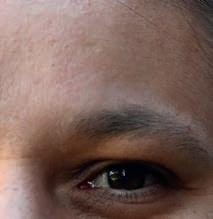
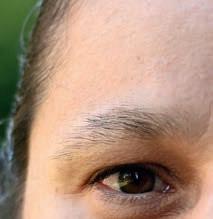

BOTTOM: Dr. Keisha Jefferies, School of Nursing


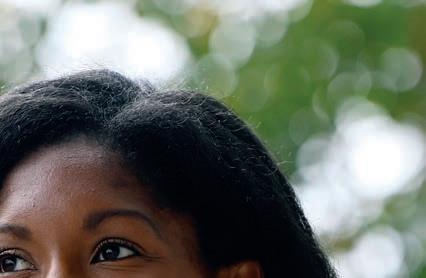


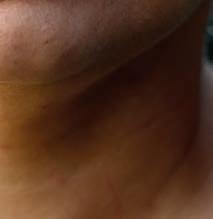
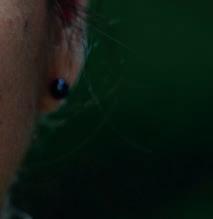
RIGHT: Dr. OmiSoore Dryden associate professor, James R. Johnston Endowed Chair, Black Canadian Studies, Faculty of Medicine

Here in Nova Scotia, as elsewhere, the historical trauma faced by Indigenous and African Nova Scotian communities has had a profound effect on the physical and mental health of those populations, a reality that is often ignored and under-researched.


Dr. OmiSoore Dryden is the James R. Johnston Endowed Chair in Black Canadian Studies in the Faculty of Medicine. She says systemic anti-Black racism is a barrier Black people have encountered in attempts to access health care, presenting as both structural barriers, such as access to primary care providers, and barriers not so easily named, such race-based medicine.
“What that has meant clinically is that Black people often get much sicker before a diagnosis is made, then are further along in whatever that illness may be, and then, therefore, have poor outcomes.”
Dr. Hamilton-Hinch says some of the challenges Black and Indigenous patients may face stem from a lack of education on diverse populations among health-care practitioners. She notes we need to be intentional in looking at how are we impacting all diverse populations. There will be some populations that receive more focus because of the historical and generational trauma that they have faced.
“It’s important not to have what we have heard called the ‘Marginalized Olympics.’ We’re not trying to determine who was more marginalized than who; we’re trying to look at how we can, as an institution, do better for populations that have been excluded, for populations that haven’t seen themselves reflected in our students, faculty, staff, and administration.”
Indigenous clients face several deep-rooted complex issues to accessing health care, according to Dawn GooGoo, a Mi’kmaq registered nurse and lead in Indigenous Health Nursing. She says she has experienced these issues as both a health-care provider, and as client of the system.
“I have seen racism, financial barriers, and lack of understand-


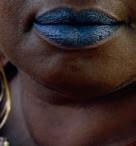

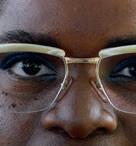
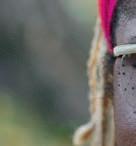


lead to delayed access to care, missed diagnoses, undertreatment, and, in the worst circumstances, death.
Research has shown that people want health-care providers who can understand and appre-
patient rating score.
According to Dr. Dryden, there is a well-developed mistrust of the system stemming from a long history of mistreatment, and this often prevents patients in underrepresented groups from asking questions or expressing concerns they have.
“We hope that when you have physicians or nurse practitioners or health-care professionals and practitioners who represent the community, that they’re also bringing in some of that cultural knowledge. And until we fully realize that we need something as simple as having more representation of practitioners, and greater knowledge of anti-Black racism, then we will continue to see these disparities in health.”
Dawn GooGoo agrees.
“I can sense the relief of Indigenous clients when they realize I’m their nurse for the day, or when they see me in emergency situations. I have had Indigenous clients in the past that were ready to walk out of the hospital until I came to see them.”
While representation is key, of equal or greater importance is competence.

“Practitioners, whether they look like [patients] or not, still need to deliver care that is culturally competent and be able to address the needs and the issues that people are presenting with,” says Dr. Keisha Jefferies, a registered nurse in the School of Nursing.
She says, ultimately it comes down to the practitioner-patient relationship.
ing from both the client and provider as some challenges. Health providers carry stereotypes with them as they provide care, and they have no background knowledge of our culture.”
For both of these populations, racism and discrimination often
ciate their lived experiences. A 2020 University of Pennsylvania study analyzed 117,589 patient surveys from 2014 to 2017 and found patients who shared the same racial or ethnic background as their physician were more likely to give the maximum


“If you feel comfortable and you feel as though you can trust the provider, then you’re more likely to disclose information that might make an important difference to your treatment plan. So that will definitely impact outcomes.”
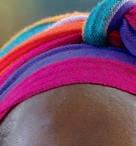
“We need to make sure that we are weaving through all aspects of education and residency an antiracist lens.”
—Dr. OmiSoore Dryden
Improving diversity and representation among practitioners requires intentional and deliberate efforts to increase admissions of underrepresented applicants. Educational equity and affirmative action processes are required to increase both admissions to the program and the number of graduates from underrepresented groups. Aligning with Dalhousie’s strategic plan, Third Century Promise , there is now a stronger commitment to make changes to admissions policies in order to open doors to individuals who had previously been shut out.
“Not all students are starting at the same point, and currently we have very antiquated and restrictive admission criteria that focus mostly on GPA, and discount community involvement or volunteering,” says Jefferies. “We need to be thinking critically about who is missing from the program? Who would we like to see in the program?”
The Faculty of Health is altering its admissions policies to give priority to members of populations who’ve historically been excluded. The School of Social Work is a leader in this area, and under its Affirmative Action Policy, is committed to admitting and graduating the highest possible number of students who identify as Acadian, Aboriginal, African Canadian, members of other racially-visible groups, persons with disabilities, and Lesbian, Gay, Bisexual, Transgender, Two-Spirit, Queer and Intersex (LGBT2SQI) people.
Beginning this fall, the School of Nursing has committed to reserving 20 seats for African Nova Scotian students and 20 seats for Indigenous students.
To support those students, advisors have been hired to provide aid and encouragement once they have been accepted to the program.
Dr. Hamilton-Hinch is pleased the Faculty of Health is taking steps in the right direction but knows there’s a lot more to be done.
“The conversations are happening, and it’s going to be an uphill battle. But we’re ready for it, and we’re changing minds one step at a time.”
Like the Faculty of Health, the Faculty of Dentistry has also employed an Affirmative Action Policy with the goal of increasing the number of African Canadian and Indigenous students admitted to their programs. With no limit to the number of seats granted, students applying under this policy will be granted admission if they meet entrance requirements. The policy, which has been in effect for more than 20 years, has allowed the Faculty to make significant strides in increasing diversity among its student population.
Once admitted, students in the Faculty of Dentistry are supported by the Faculty’s new community engagement and outreach coordinator. This position collaborates with the Faculty of Medicine’s Global Health Office—particularly with the Managers of PLANS (Promoting Leadership in Health for African Nova Scotians), Indigenous Health in Medicine, and Francophone Health—for program integration and to promote admission into oral health programs for students from traditionally underrepresented communities. Working with both the Black Student and Indigenous Student Advising Centres, they also assist students with the transition into the Faculty of Dentistry, and seek ways to provide
mentorship and support for students from priority populations to ensure their success.
In the Faculty of Medicine, admissions policies have also changed to admit and support more students from groups underrepresented in medical practice. Led by Dr. Brent Young, an Anishinaabe family physician and academic director for Indigenous health at Dalhousie, the new Indigenous Admissions Pathway began accepting applicants for the 2022/2023 application cycle last spring.
“Through this pathway, we are hoping to see a substantial increase in the number of Indigenous people who are admitted to Dalhousie Medical School,” says Dr. Young. “I am working very closely with our Indigenous student support program, Keknu’tmasiek Welo’ltimk, to develop culturally relevant supports for Indigenous medical students and residents at Dalhousie. This includes mentorship, Elder advising, traditional healing practices, craft workshops, language revitalization activities, student retreats, and regular talking circles.”
A comparable program will be developed for African Nova Scotian applicants led by the newly appointed academic director for Black health, Dr. Leah Jones. Similarly, in the Bachelor of Medical Sciences Program, an initiative is in place to attract and support Indigenous students from the Maritimes and African Nova Scotian students.
of people of African descent in the health professions. Besides being assistant vice-provost, she is an associate professor in the School of Health and Human Performance and co-chair of PLANS, a program that seeks to increase representation of African Nova Scotians in the health professions through recruitment and retention, community collaborations, and partnerships to improve health outcomes within the African Nova Scotian community.
“There’s not enough teaching around diverse populations,” says Dr. Hamilton-Hinch. “We need to make sure that there’s courses, that there’s lectures—that there’s representation.”
Heather Doucette is an associate professor in the Faculty of Dentistry. She has developed and delivers a community practice and health promotion course to Bachelor of Dental Hygiene students that is focused on providing and promoting oral health care to diverse and vulnerable populations through a culturally sensitive community-based lens. This also involves experiential interprofessional collaboration to help meet the oral health needs of individuals in the community.
Dr. Hamilton-Hinch is working hard to increase the number
Doucette is also the director of the Government Assisted Populations (GAP) Clinic, where all dentistry and dental hygiene students gain experience providing oral health care to new refugees in Nova Scotia. Each Monday, refugees, many of whom speak languages other than English, visit this clinic and receive oral health care with the assistance of language interpreters. This is made possible through a collaboration with the Immigrant Services Association of Nova Scotia (ISANS), who ensures interpreters are available for each of the languages spoken by the patients.
underrepresented communities






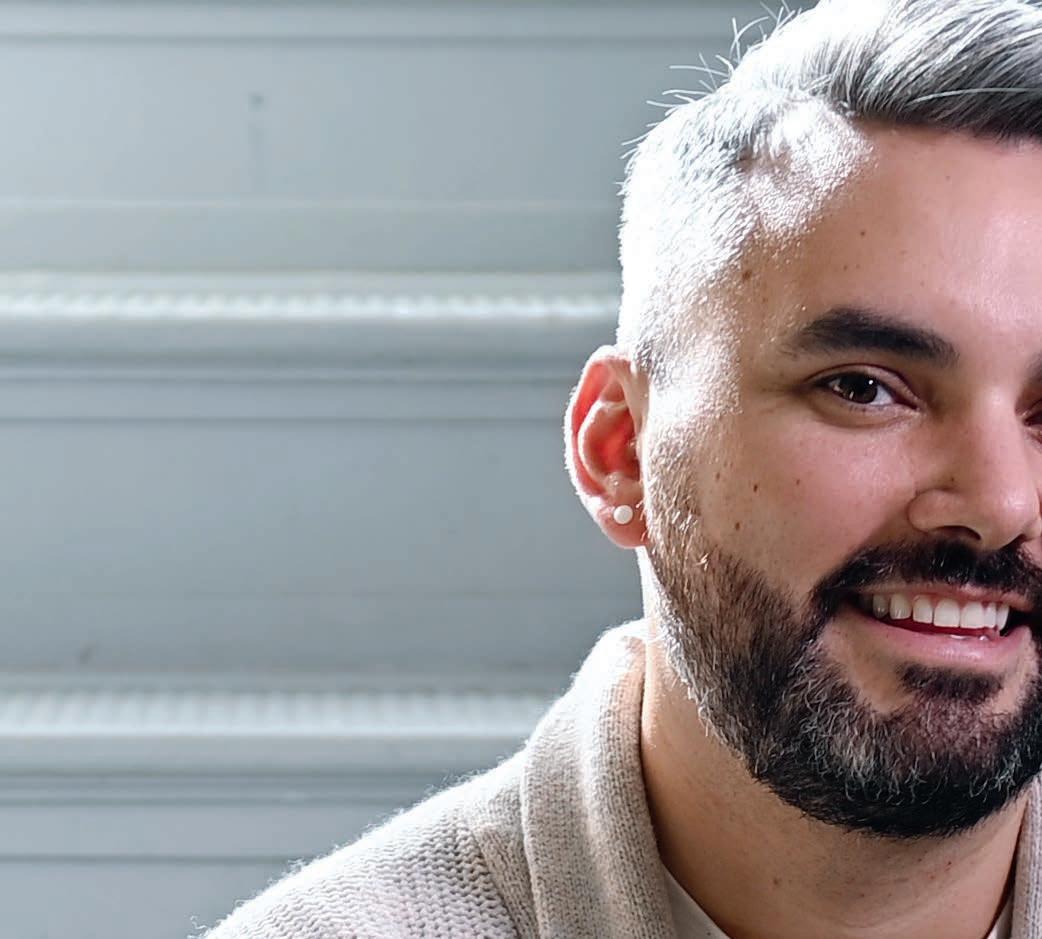


“No single person is to blame for this, but we all have a responsibility to address it.”
—Dr. Brent Young
“It’s very clear, and research indicates that patients’ health outcomes are improved when they receive health care in their own language,” says Doucette. “In addition to language, it is also important that patients receive care with an understanding and respect of their culture. It has been my experience that patients feel much more comfortable and engaged in their health care when their cultural norms are understood and respected.”
Students in the Faculty of Dentistry are also working with various other populations in the Halifax-area, such as street-risk youth, African Nova Scotians, and seniors in long term care, who may not otherwise receive care due to a variety of barriers.
“All of these clinical experiences help students develop the skills and compassion necessary to provide oral health care to populations that they may not have had an opportunity to provide care for in our regular clinic,” says Doucette. “The goal is for dentistry and dental hygiene students to understand the importance of providing and advocating for culturally sensitive care for individuals and populations who experience oral health disparities due in part to inequitable access to care.”
In the Faculty of Medicine, under the leadership of Dr. Gaynor Watson-Creed, associate dean of Serving and Engaging Society, a deliberate step has been made to rename its approach from antiracism and antidiscrimination alone, to anti-oppressive practice. The Faculty has just undergone a refresh of its undergraduate curriculum, which included a substantial focus on equity, diversity, inclusion and accessibility (EDIA) and marginalized communities. Part of that work was ensuring content is more reflec-
tive of diverse populations and free of language that could perpetuate stigma, bias, and harm. As the refresh unfolds, work will be done to identify additional learning objectives that are specific to both Indigenous and African Nova Scotian health.
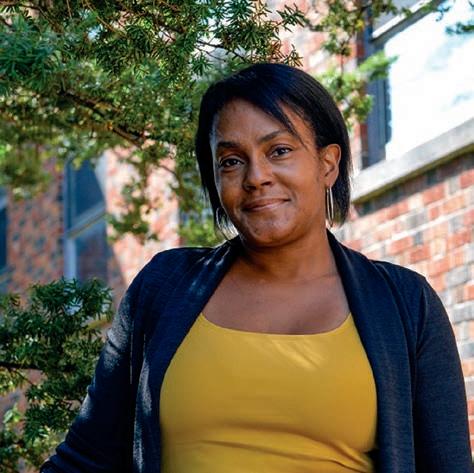
Dr. Watson-Creed describes the Faculty of Medicine as being in an “emergent” state when it comes to EDIA work because, due to the complexities of the work, predicting where each initiative will lead and what comes next is uncertain. The heightened sensitivity that comes with that state, she hopes, will spur ongoing change.
“It can be difficult to recognize harmful patterns of behaviour within ourselves because racism and colonialism are so deeply
embedded within the fabric of our society,” says Dr. Young. “No single person is to blame for this, but we all have a responsibility to address it. In the absence of formal training, self-directed learning is key.”
Practitioners must consider how systemic racism is impacting their assessments and be as committed to learning and engagement as they are to their health-care specialty.
Dr. Hamilton-Hinch is working with colleagues to develop a capstone course, so in the same way that university graduates must have an English or writing course in order to graduate, they will also be required to have a course on diversity and inclusion. The hope is to pilot the course in January 2023. She says even though Dalhousie offers some courses specific to Indigenous and Black health, it would be nice to
have a more integrated approach.
“Wouldn’t it be great if these topics were integrated in every course in the Faculty of Health and in the university? If every professor had the skill set or the knowledge or the resources to incorporate EDI in their classes? It shouldn’t be an add on. It should be part of every curriculum that we’re doing within our institution.”
It’s a tall order but gives the institution something to strive for.

And Dr. Dryden says it’s a crucial part of training the next generation of health-care providers.
“We need to make sure that we are weaving through all aspects of education and residency an antiracist lens. If we incorporate this piece, then we will actually be giving our students the skills and competencies they will need to be good health-care practitioners.”
Dr. Gaynor Watson-Creed hopes today’s EDIA initiatives will spur ongoing change.MELANIE JOLLYMORE






















THE YEAR wasn’t supposed to turn out like this.
It’s mid-summer of 2018, and it’s the wrong kind of hot. A fire has engulfed a portion of one of Dalhousie’s key academic buildings on the Agricultural Campus near Truro, N.S. At 10 p.m., Nancy McLean, an assistant professor there, receives a call.




“My sister phoned to say that there was smoke coming from my building,” says McLean, recalling how she first learned about the fire unfolding at the Cox Institute.
Given the late hour and the extended drive from her home on a farm in neighbouring Pictou County, she resolves to wait it out until morning before dropping by the scene.
On the way into work the next morning, McLean hears on local radio that Cox—where her research lab is located—looks fine and that no one was injured in the blaze. Her mood brightens a bit. But moments after arriving on campus her hope melts away like soft serve on a sweltering day. As she peers through a window into her basement office, she’s confronted by a stark scene.
LEFT: The rebuilt Cox Institute in 2022
RIGHT: A photo of a lecture hall destroyed in the 2018 fire sits atop an easel in the newly built space



“I could see fridges floating, freezers on their sides, everything destroyed from the water damage,” she remembers. “Samples, computers, tissue culture labs, growth rooms, all of the equipment. Everything—destroyed.”




As the scale of the disaster sinks in, McLean’s mind churns through the coming ripple effects: the decades-long research studies, detailed field notes, computers filled with data, all now threatened by the water raining down to douse the fire. And what would become of the wild bee specimens she and her research team had painstakingly gathered during field trips? One heavy thought led to another.
Soon, other people arrive on scene, many facing similar grim realizations.
About a 45-minute drive away in Halifax, news of the fire generates an all-hands-on-deck response. Administrators assemble, frequent information updates are scheduled, and calls from media are fielded. Soon, a group of senior leaders from Halifax hits the highway headed for Truro. Despite the distance from the disaster, the wounds cut deep— akin to how it might feel if misfortune were to befall a close family member.
And the Faculty of Agriculture was most certainly close family by this time. Six years earlier, Dalhousie had merged with the Nova Scotia Agricultural College (NSAC). Like all unions, marital or otherwise, there was an adjustment period. But by the summer of 2018, the Faculty of Agriculture— the entity created through unification—was well on its way to achieving some of the goals laid out in the initial strategy behind the merger.
That is, until the flames in the Cox upset the balance and left virtually everyone on the campus asking the same question: where do we go from here?
NEWS THAT Dal and NSAC were in talks to join forces surprised some when it was first made public in late May 2011.
Paul Manning, a third-year student and president of the college’s student union at the time, remembers being called to a meeting one Friday morning for a “big announcement.” He was among about 200 people assembled.
“It was an emotional morning for many people for a lot of different reasons,” says Manning, now an assistant professor in the Department of Plant, Food and Environmental Science. “There was a feeling of excitement for some people, but others were really sad.”
As a student leader, Manning stood up for those who had reservations—even if he himself felt hopeful about the potential benefits of the merger. Some students, particularly those with deep family ties to the college, worried about what change might bring to the college’s close-knit culture, its small class sizes, the working farm, and more.
And students weren’t the only group wondering what the deal might bring. Staff, faculty, and even industry pondered what a merger might mean for them. Would there be layoffs? Were valuable research partnerships at risk? Questions swirled.
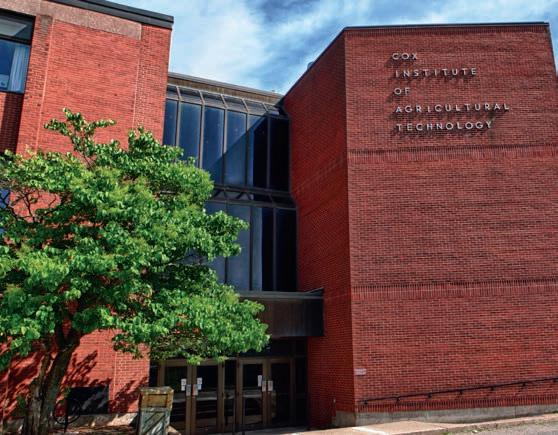
That morning on campus, then-Dal President Tom Traves reassured members of the NSAC community that the intent of the merger was not to downsize or save money but to “take our strengths and build something better together.” Government ministers on hand echoed the sentiments, saying their priorities for the college were to maintain a strong presence in the Truro-Bible Hill area, protect jobs, increase enrolment, and enhance the student experience.
NSAC, by then more than a century old and operating as a division of the provincial Department of Agriculture,







had been seeking out a new governance structure for years. A merger with Dal made sense on several levels as the two institutions already worked closely together in many respects; Dal granted bachelor’s and master’s degrees to NSAC students, NSAC faculty had a presence on the Dalhousie Senate, and Dalhousie held representation on the NSAC Faculty Council. What’s more, the province’s two largest postsecondary institutions by research funding dollars also shared many research interests and the merger promised to bring even closer collaboration and new opportunities for faculty members.
With formal merger talks underway, Manning and others at NSAC prepared for a future as part of Dalhousie. He and fellow student leaders found themselves wrapped up in negotiations with their counterparts at the Dalhousie Student Union in Halifax. Teams of staff and faculty engaged in similar discussions. While it would take some time iron out all the details— in some cases, years—these early discussions helped set a tone of civility, cooperation, and fairness.
Just over a year after the merger plans were first announced, the Faculty of Agriculture officially launched on September 1, 2012. Moving forward as a united front proved valuable at a time when global issues such as climate change and food insecurity placed increasing demands on researchers to help find solutions.
THERE'S A LOT to take in when stepping onto Dal’s Agricultural Campus in Bible Hill near Truro. You’ll find barns, a robotic feed system, and nearly 1,000 acres of research fields, gardens, and greenhouses. Depending on the time of day you might also cross paths with cows, sheep, or other farm animals out grazing.
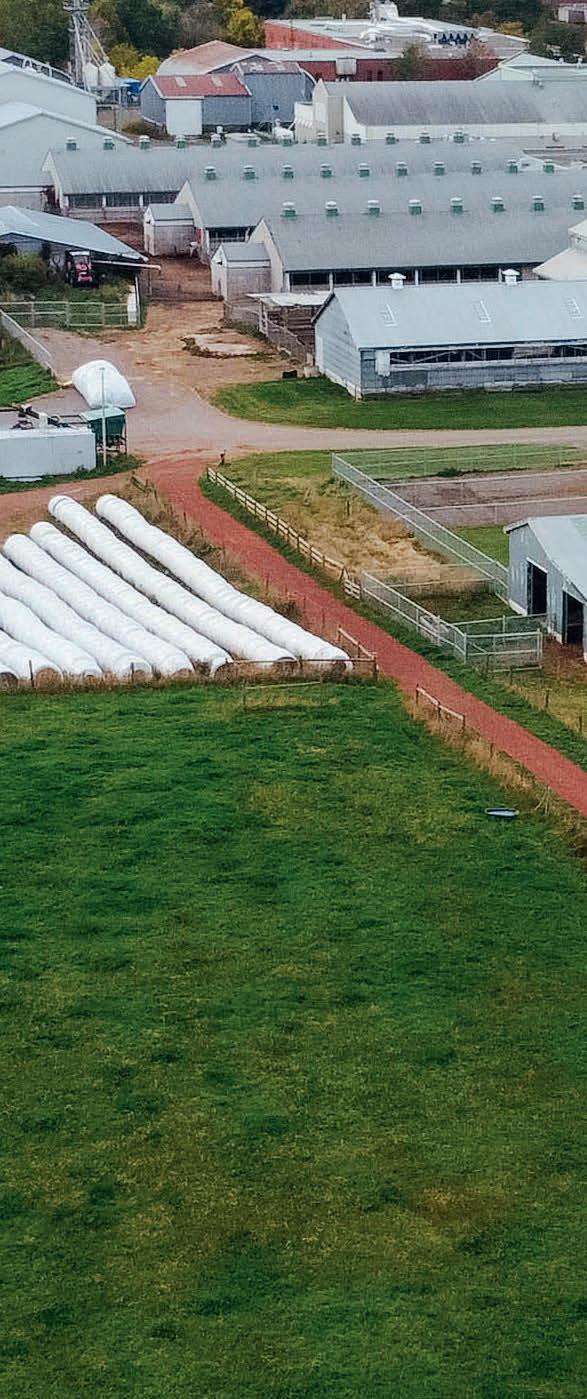
These facilities, tools, and natural resources power the industry-leading education and research happening there today, and that has in some cases been happening since 1905, when the campus was first established. But these days, the pastoral landscapes are also increasingly dotted with more modern facilities and technologies: drones or other smart-farming technologies scanning the fields to enhance pest control, 8,100 square feet of digitally powered aquatic research facilities to seek better ways to feed a growing global population, an awardwinning biomass plant that heats and powers the campus with alternative energy, and much more.
Student spaces on campus look and feel different these days, too. A new student learning commons opened on the upper level of the MacRae Library in 2019, and an Indigenous Community Room located nearby serves as a welcoming public space for Indigenous students and community members as well as a regional hub of the National Centre for Truth and Reconciliation.
Aerial view of the Faculty of Agriculture’s working farmDal’s Agricultural Campus facilities, tools, and natural resources power the industry-leading education and research happening there today.
None of these changes happened overnight and some were already in the works pre-merger. But twotime Ag grad Robyn McCallum, current president of the Miramichi Salmon Association, an adjunct faculty member at Dal, and a director of the Faculty of Agriculture’s alumni board, says the shift in governance from the province to Dal has clearly had a positive impact.

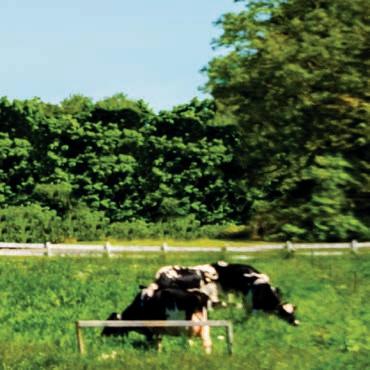

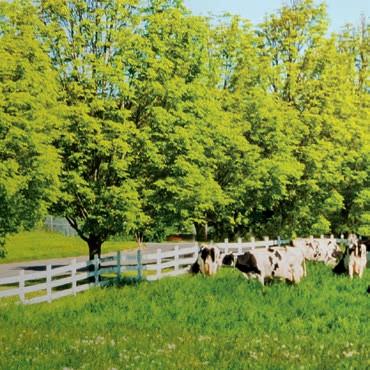
“Dal’s influence, leadership and international partnerships have really benefitted the Ag campus over the past 10 years,” she says. “We no longer had to get in line behind hospitals and elementary, middle, and high schools for funding. Instead, we go through Dal, run capital campaigns, and create strong budgeting priorities. We can see the benefits from that now.”
Through it all, McCallum says the campus has continued to hang onto its one-of-a-kind Aggie spirit.
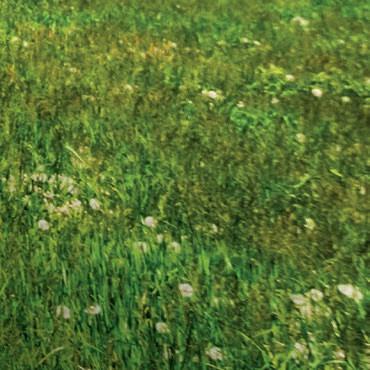
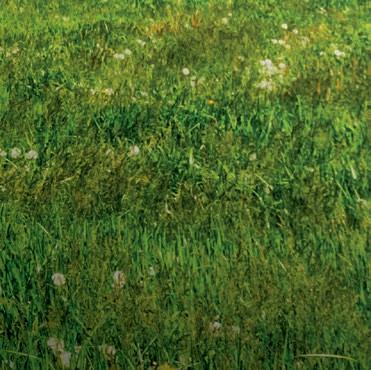
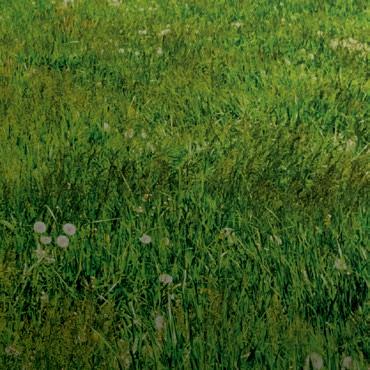


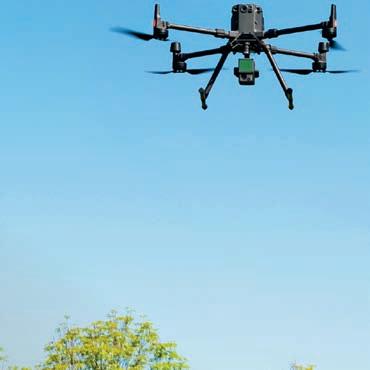
“People can see that we still are a unique campus and have kept our own identity, but we’re now part of the Dal brand, which can perhaps take us a little bit further than we could have as just the NSAC.”


Pastoral landscapes are increasingly dotted with more modern facilities and smart-farming technologies.
WHEN DR. YUNFEI JIANG returned to the Faculty of Agriculture as an assistant professor of agronomy in January 2022, it was a homecoming in many respects. Originally from Langqi Island in China, an agriculturally rich slice of Fujian province, Jiang first encountered the bucolic charms of Bible Hill in 2010 when she began a master’s degree at NSAC. It’s where her passion for crop physiology and agronomy truly took root. It’s also where she first met her future husband, Dustin MacLean, a fellow NSAC student who grew up in the area.
Jiang, along with Manning and McCallum, had been among the first cohort of NSAC students to graduate from Dal’s newly minted Faculty of Agriculture in 2013. When she left to undertake a PhD in plant science at the University of Saskatchewan, Jiang felt grateful for the support she had received as an international student at NSAC and, later, Dal. The Agricultural Campus’s relatively small size meant students like her could always find help when they needed it. “NSAC and Dal really helped me to build a strong background and become the researcher I am today,” she says.
Following her PhD, Dr. Jiang took on a postdoctoral fellowship at the University of Guelph and then a position with the National Research Council Canada in Saskatoon. All great career moves, but as Dr. Jiang puts it: “We always wanted to come back. We were just looking for an opportunity.” Finally, the right one emerged, and she and her husband plotted their return. After nearly a full decade away, Dr. Jiang was pleased to find many of the supports she benefitted from as a student had remained and, in fact, grown more extensive. She was also pleased to discover that supports for researchers were more robust and collaboration across faculties and disciplines at Dal had begun to fully blossom. “It brought the Agricultural Campus to a bigger stage,” she says of the merger.
Manning, the former student leader and Dal’s 87th Rhodes Scholar, also felt the pull back into the Dal family orbit. As with Dr. Jiang, there were both personal and professional reasons: his long-time partner (now wife) was living in Truro, so when a teaching job popped up at Dal in 2016, he took the plunge. Before long, the nowdoctor Manning found out there were additional upsides post-merger for young researchers like himself when he received a prestigious Killam Postdoctoral Fellowship in his field of agroecology. A Dalhousie award he would not have had access to through NSAC.
“From a research side, the merger has been really useful in creating opportunities,” says Dr. Manning, whose appointment as an assistant professor followed in 2021. “That’s not something I would have thought of as an undergrad student, but as a faculty member you can see that quite clearly.”
Over the past several years, the Faculty of Agriculture has seen its ranks of young researchers such as
Dr. Manning and Dr. Jiang swell. And food security, an issue led by researchers on the Truro Campus, now serves as one of Dal’s five signature research clusters—a symbol of a closer alignment in priorities between Dal and the Faculty than ever before.
IN THE months just prior to the Cox Fire in 2018, the Faculty of Agriculture unveiled several key academic initiatives that had been in the works for years, including its PhD program in Agricultural Sciences. One of the first degrees of its kind in Atlantic Canada, it promised to create many opportunities for Ag students and researchers alike. The following month, it also announced the Indigenous Student Access Pathway initiative—a one-year program designed specifically for First Nations, Métis, and Inuit students not otherwise eligible for admission to Dal. The program provided both the tools for navigating post-secondary, as well as a culturally supportive environment to help students succeed. Other powerful programs were in the works, too.
To see such forward-thinking initiatives come to life on the Ag campus felt immensely satisfying for David Gray, campus principal and dean of the Faculty of Agriculture. It was further proof that a union between NSAC and Dal had been the right move. Which is why it was all the more difficult when the Cox was devastated shortly thereafter.
“Everything else just got completely pushed off to the side,” says Queena Crooker-Smith, an administrator in the dean’s office.
A 20-year veteran of Dal who’d worked primarily in Halifax, Crooker-Smith hadn’t even completed a year in her role on the Ag campus when disaster struck. Overnight, her job completely changed. Suddenly, she found herself handing tissues to researchers “whose entire careers were soggy and dripping with water.” She coordinated with Human Resources to have counsellors on hand for those in need. “We had supports for those
“NSAC and Dal really helped me to build a strong background and become the researcher I am today.”
—Dr. Yunfei Jiang
people no matter what situation they found themselves in. It all took a huge emotional, human toll.”
Luckily, there were small moments of joy amidst the chaos. McLean, the researcher who’d arrived to find her whole lab under water, was able to work with a retrieval team to rescue the frozen wild bee samples she was worried were lost forever. Katherine Rutherford, a doctoral student whose work relied on the samples, was then able to continue her research exploring what plants to maintain to support those bees—nature’s most efficient pollinators—outside of the blueberry blooming season. “Katherine’s research material was saved through that rescue operation,” McLean says.
McLean and others are now back up and running in the newly rebuilt Cox and shifting gears to prepare for major new investments in data-driven research and smart farming.

Another priority, one first envisioned at the time of the merger, has also been reborn and launched this fall on the campus. Called Truro Start, it’s a program that enables students from faculties other than agriculture to begin their degrees in a small-town setting with smaller class sizes—for some students a better transition from home and high school to a university setting.
Through such initiatives—and through various
infrastructure investments made possible after the merger—Dal’s Truro campus has become more diverse, innovative and academically rigorous. “Dalhousie really stepped up to the plate and then some to help us make all of that possible,” says Dr. Gray. “So much so that I believe we are in a very good place to take the next step as a faculty.”
It’s a difficult time to be a student but your gift can make it easier.
Your donation will provide much needed bursary support and help students cope with rising living costs.
GIVE TODAY AT giving.dal.ca/studentsupport
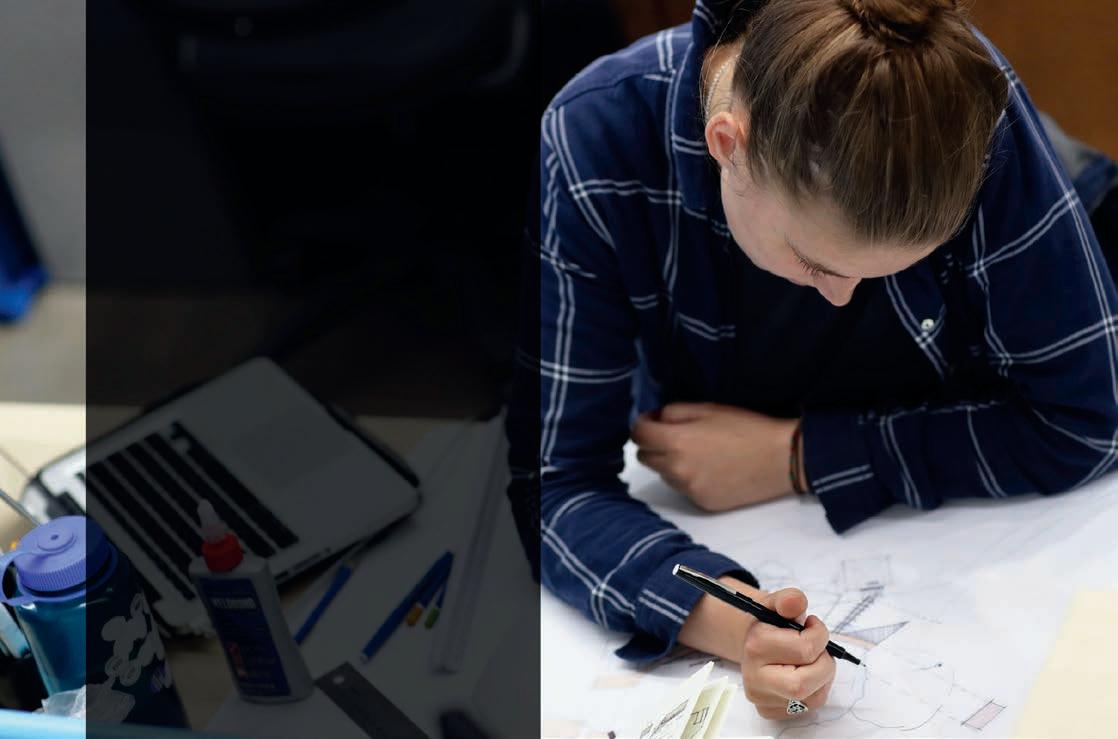 The rebuilt Cox labs, ready to go.
The rebuilt Cox labs, ready to go.


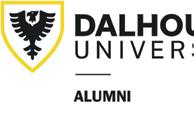

For additional class notes, visit alumni.dal.ca/class-notes
’65
Three-time Dal grad Porter Scobey (BSc, MA’69, PhD’77) started his 53rd year of teaching mathematics and computing science at Saint Mary’s University. Porter has also taken the pandemic opportunity to “restart” his long-dormant recording career. His most recent effort (12 musicians and 3 background singers) is a tribute to New York City, based on a true story from a long-ago visit. He shares his musical links on his SMU homepage: cs.smu. ca/~porter.
’70
Tony Thomson (BA, BEd’71, MA’77) has authored his debut novel. Published by Moose House Publications, Annapolis Royal, N.S., About Face: A Mystery is not just another murder mystery. Tony, professor emeritus at Acadia University, researched policing in the Annapolis Valley. He now lives in Halifax with his wife, Heather Frenette (BSc’77, BEd’79). They enjoy travelling to Medicine Hat, Alta., to visit with their daughter and granddaughters, and to Toronto to enjoy the company of their son.
’72
Lawrence (Laurie) Pascoe (BComm, LLB’75) had
his book Innovative Legal Service Applications: A Guide to Improved Client Services published by the American Bar Association’s Solo, Small Firm, and General Practice Division. The book provides lawyers in all stages of their careers with his theories and numerous applications to improve client services in all practice areas.
’73
Rob Bethune (BSc) spent his career developing molecular methods for microbiology at the QEII Health Sciences Centre, then taught microbiology and molecular diagnostics to medical laboratory technologists at NSCC. Recently, after obtaining his doctorate in practical theology from Master’s International University of Divinity, Evansville, Ind., Rob was ordained with Bethel Church Halifax, a Partners in Harvest Church.
’75
Cathy J. Campbell (BPE, MSc’77) was appointed FIFA medical director and doping control officer for the U17 Women’s World Cup Tournament in India in October 2022. This will be her 16th World Cup.
Dr. Rex Dunn (MD, PGM ’79) received an honorary degree (Doctor of Laws, honoris causa) from Cape Breton University on May 9, 2022, for dedicating his career to advancing vascular
care. Along with his many leadership roles, including Chief of Staff of the Cape Breton Regional Hospital, Vice President of Medicine of the Cape Breton District Health Authority and President of the College of Physicians and Surgeons of Nova Scotia, he is a committed volunteer to local and international initiatives.
Bev Vincent (BSc, PhD’88) has written Stephen King: A Complete Exploration of His Work, Life, and Influences, published by the Quarto Group on September 20, 2022, marking the Maine author’s 75th birthday. The book connects biographical information with the novels King was working on at the time, and features scores of photographs and document reproductions. Bev previously co-edited the anthology Flight or Fright with King.
Anna Stammberger (BPE), Olympian, Nova Scotia Sports Hall of Fame member, and former Dal Tigers basketball coach; Dr. Marion Brown (BA’88, BSW’90, MSW’97), Dal Tigers basketball alumna and associate professor in Dal’s School of Social Work; and Sue Caldwell Ehler (BScPT’87) embarked on a cycling tour of the Mosel and Rhine River valleys in Germany in May 2022.
Dr. Joseph Horan (MD) retired from family practice on May 22, 2022, after 34 years of serving Foxboro, Mass., and the surrounding communities.
Sean Paul Bedell’s (BA) new novel Somewhere There’s Music, was released from Now or Never Publishing. While shining a light on the trauma first responders endure, Somewhere There’s Music immerses the reader in a young man’s struggle and desperate search to find what’s left of his family.
’88
Mary Graham (MMA) has written a book on film after years as a documentary journalist and public consultations specialist for the offshore oil industry. Published by the University of Calgary Press, Big Horn Books imprint, A Stunning Backdrop: Alberta in the Movies 1917-1960 is the story of six rollicking decades of filmmaking in Alberta. Mary has worked with First Nations communities to record their history of importance to the film industry and has received a Canada Council Grant to undertake research for a second book, a film history of Alberta after 1960.
Dr. Rajiv Samant (MD) has published a personal memoir titled Beyond the Village: My Grateful Journey, reflecting on medical school life, and highlighting the importance of community and gratitude.
’89
Roger Thompson (BA, BAHC’91, MA’94) has recently been appointed as research fellow with the Centre for the Study of Security and Development at Dalhousie, culminating from many years of study, research and publishing. His second book, Lessons Not
Learned: The U.S. Navy’s Status Quo Culture earned him a fellowship in Great Britain’s prestigious Royal Society of Arts.

Henry Howard (BA, BEDS’03, MArch’05) is owner and principal at H2 Architecture Ltd. in Edmonton. He designed the renovations of Sacred Heart Catholic Church of the First Peoples, visited by Pope Francis during his summer 2022 visit to Canada.
’90

Andrew D. Little (LLB) has been appointed Chair of Canada’s Competition Tribunal. He has been a federal court judge since May 2020.





Michelle Wamboldt (BA) has published her first novel, Birth Road, through Nimbus Publishing. Set in early 20th century Nova Scotia, it is a story of love, lost innocence and the secrets that often haunt small places. Michelle lives on Nova Scotia’s South Shore.
’91
Laina (Lynch) Andrews (BEd) retired in June 2022. She was a teacher of history and outdoor education, consultant, dean of adult and alternative education, longstanding principal, and finally superintendent of education for six years. She resides in a rural area north of Cobourg, Ont. and has assumed a position in the Faculty of Education at Ontario Tech University.
’92



Kelly Hayes McAlonie (BEDS, MArch’94) was awarded the James William Kideney Award, the highest award bestowed on a member which recognizes a lifetime of notable contributions by an architect to the profession, the professional society and the community, by the American Institute of Architects New York State.
’96
Darren MacDonald (BScK) graduated in May with honors from the University of Illinois at Urbana-Champaign with an MBA from the Gies College of Business specializing in strategic innovation & entrepreneurship as well as digital marketing. Darren left his director position

at CBU to join a small, virtual team at Mashup Lab focused on unleashing the potential of rural entrepreneurship across North America.
’98

Paul Moore (MBA) came out of semi-retirement to accept a position as lead coordinator, communications and media relations with Illinois Central College in East Peoria, Ill. He lives in nearby Metamora with his wife, Mary Louise, and writes a monthly column for the Catholic Post, the newspaper of the Diocese of Peoria.
’99
Faten Alshazly (BScCS) is the principal and chief creative officer at WeUsThem and chair

of the Halifax Chamber of Commerce. Faten is the first immigrant in over 250 years of the Chamber to lead this organization. With a growth agenda, Faten is poised to reposition the thinking in the business communities to one that sees us well past the pandemic and into a new norm that supports our collective futures.
Dr. Trevor Jain (MD) has been appointed director of clinical programs at the newly created Faculty of Medicine at the University of Prince Edward Island, a joint effort between Memorial University and UPEI. 2000s
Sangeeta Wylie’s (DDS) first play, we the same, received six Jessie Award nominations, following its World Professional Premiere with Ruby Slippers Theatre and The Cultch (Vancouver). The Jessie Richardson Award Society celebrates and promotes the outstanding achievements of the Vancouver Professional Theatre community. The play has been added to the curriculum at the University of Victoria’s Theatre Department.
Jeff Livingston (MBA) is founder and host of ADP Canada’s Insights@Work podcast, where he welcomes guests from around the world to share experiences and insights to inspire people and companies
to better engage their talent. Jeff recently served as president of the board of directors for Cota Health, a not-for-profit organization which supports adults with mental health and cognitive challenges.
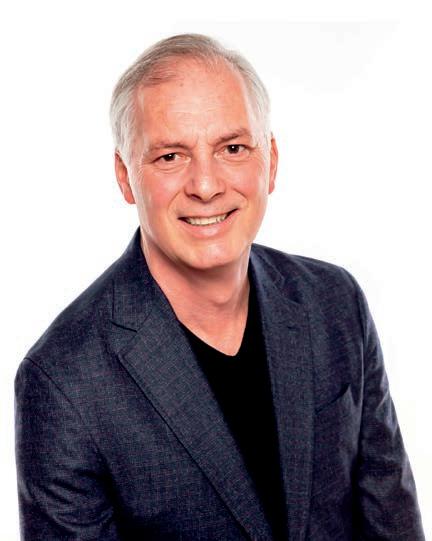
’08
Tyler Schulz (PhD, MSc’01) was appointed Assistant Auditor General in October 2021, assuming the duties of Ontario’s Commissioner of the Environment. Acting in this role since February 2021, Tyler leads the Office of the Auditor General of Ontario’s environmental portfolio, holding the province accountable for its environmental programs. Tyler previously worked in this office as Audit Director, and at the Office of the Environmental
Commissioner of Ontario as Deputy Commissioner, Director of Operations and Senior Policy Advisor.

Brad Pickard (MArch) of Oxbow Architecture in Saskatchewan, along with Dalhousie Architecture Professor Emeritus Richard Kroeker, won a WAFX Award (World Architecture Festival Prize) for a powwow stadium they designed for the Muscowpetung Saulteaux First Nation on Treaty 4 Territory in southeast Saskatchewan. It is a cultural venue for the Muscowpetung Saulteaux Nation that integrates a central dance circle, spectator
seating, an announcer’s booth and vendor stalls below the perimeter-raked seating.
’11


Dr. Leisha Hawker (MD) was installed as head of Doctors Nova Scotia during its annual conference in early June. Dr. Hawker completed her training in family medicine in 2013 and earned a certificate of added competence in addiction medicine in 2019. Her primary role is at the North End Community Health Centre on Gottingen Street in Halifax.

Library Staff, Dalhousie University, August 27, 1952: Dot MacKay, Edna Terrell, Ivy Prikler, Marie Adams, Connie Oakley, B. Murray and Miss K. Johnston. Absent were Mrs. E. Apinas and Mrs. D. Payn
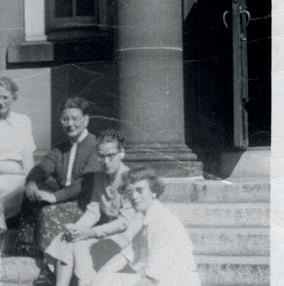

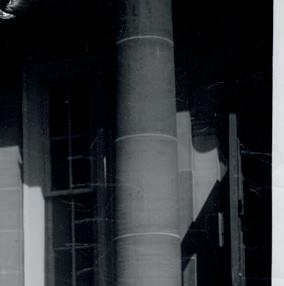
Jennifer LaPlante has been appointed as Executive Director of Faculty of Computer Science-based technology innovation sandbox, ShiftKey Labs. Jennifer will lead ShiftKey Labs alongside her role as Executive Director of ocean data innovation environment, DeepSense.





The Faculty of Arts and Social Sciences is pleased to announce the appointment of its new Dean, Dr. Jennifer Andrews who began her term on July 1, 2022, after working as a Professor of English at the University of New Brunswick for 23 years.
Mike Smit, Associate Dean Academic, Faculty of
Management, was appointed Deputy Scientific Director at the Ocean Frontiers Institute. Dr. Smit, and colleague Colin Conrad also won Data Champions, sponsored by the Digital Research Alliance of Canada.













The Faculty of Management welcomes Stacy AllisonCassin and Justin McManus as assistant professors, and Simon Berge and Najah Attiq as associate professors. We’re pleased instructor Heather Cray is now full-time.



Dr. Vahid Adibnia is the successful candidate for the Tier 2 Canada Research Chair in Functional Polymeric Biomaterials. He joined the Faculty of Dentistry in July.
Jon Legorburu is the new James S. Palmer Chair in








Public Policy and Law. This role provides intellectual leadership and engages in projects that impact public policy locally and beyond.
Dr. Mary Ellen Macdonald is the newly appointed J & W Murphy Foundation Endowed Chair in Palliative Care.
At the 2022 Atlantic Book Awards, Lesley Choyce, Senior Instructor in the English department, Creative Writing and Transition Year Programs, received the Atlantic Legacy Award, which honours those who have made a lasting contribution to the development of the literary arts in Atlantic Canada.
Alex Neve is the 2022 recipient of the Weldon Award for Unselfish Public Service. He was honoured by Schulich Law and the Dalhousie Law Alumni Association for advancing human rights internationally.
Faculty of Dentistry associate dean of academics, Dr. Sachin Seth (DDS’00), received the Association of Canadian Faculties of Dentistry National Teaching Award for 2022 in July.
The Faculty of Dentistry has two recipients of President’s Research Excellence Awards this year, Dr. Danny Boyd and Dr. Brendan Leung
Dr. Claude Caldwell was recently selected to receive an Honourary Life membership Award from the Canadian
Seed Growers’ Association. This award is presented to person who, by distinguished services to the association, has contributed to the betterment of Canadian agriculture.
Caldwell was also selected to receive the Clark-NewmanClayton Award.
The Faculty of Computer Science is celebrating its 25th anniversary in 2022. The faculty was formed in 1997 following the merger of Dalhousie and the Technical University of Nova Scotia (TUNS).
Reuniting over topics that brought them together during their studies, Classics alumni participated in a 3-day
seminar this past summer which included a viewing of Richard Strauss’ Elektra opera and two days of discussions on Sophocles’ Electra and Euripides’ Electra.
You may submit a FACULTY NEWS OR CLASS NOTES NOTICE by emailing classnotes@dal.ca
We remember with fondness and sorrow the following Dalhousie alumni (based on information received between January and August 2022).
Dal Magazine included Maureen Greene (LLB’75) in the Spring 2022 In Memoriam listing in error. We apologize for our mistake and have reviewed processes to ensure such errors don’t happen again.
Mary King, BA’42, MA’44
Lenore Barnett, BA’43, DED’44
Irving Balcom, DED’46
Patrick Burke, BENG’47
Henry Cummings, BA’40, MA’41, LLB’48
George Smith, DENGR’46, BENG’48
John Williamson, BENG’48
Celine Hatherly, DED’49
James Stuart, BENG’52
William Black, BA’51, LLB’53
Corinne Earle, BA’53
John Rae, DENGR’51, BENG’53
Frederick Whelan, DPHRM’53
Percy Wright, DENGR’53
George Yates, LLB’51, BCOM’53
Maurice Harquail, DDS’54
Kenneth Short, DENGR’51, BENG’54
John Cook, BCOM’55
George Cooper, LLB’55
Frederick Gallagher, BENG’59
James Grant, BENG’59
Walter Goodfellow, LLB’59
William MacLeod, BSC’57, BED’59
George Phillis, BA’56, MA’59
Gregory Russell, MD’59
Mary Smyth, BSC’49, BED’59
John Muir, MD’63
Charles Piper, BCOM’63
Ross Weeks, MSC’63
Robert Kilvert, BED’64
Wayne Matheson, BCOM’65
John Wilson, BA’65
Harold Wood, DDS’65
Richard Brown, BENG’66
Arthur Coady, BCOM’66
David Pigot, BA’58, MA’66
Raymond Holmes, PHD’70
Vince Hubley, BCOM’70
Ralph Leck, BA’68, BED’70
Brian MacTavish, BENG’70
Glenda Redden, BA’59, BED’60, MA’70
Edith Starratt, BA’70
James Wambolt, BCOM’67, LLB’70
David Allen, BENG’71
Gertrude Bouzan, DPH’71
David Darby, BENG’60
William Stuart Huestis, MD’60
Herbert Goudie, BENG’50
Robert Lyall, BCOM’48, LLB’50
John Cullens, DENGR’49, BSC’51
Robert Crouse, BSC’50, BENG’51
Donald Cummings, BENG’51
Kenneth Duggan, DENGR’49, BENG’51
Paul Lee, LLB’51
John Quigley, BSC’46, MD’51
Conrad Taylor, BENG’51
Margery Crooks, BA’52 Mary Dayton, BA’52
Margaret Graham, BA’51, DED’52
Clarence Morris, DENGR’50, BENG’52
Kenneth Shelstad, MSC’52
Mary Courtney, BA’55
Benjamin Doliszny, LLB’55
Mary Fickes, DPH’55
John Moore, BCOM’53, LLB’55
James Scriven, BENG’55
Claire Sutherland, DPH’55
James Hawley, DDIP’56
Winston Lowther, BENG’56
Elmer MacKenzie, MD’56
William Currie, MA’57
Brian Ellsworth, DDIP’57
Ian MacDougall, BENG’57
Leo MacCormick, MD’57
John Baird, BENG’58
Norman Pardy, BENG’58
Arthur Unsworth, LLB’58
Charles Weaver, BENG’58
Donald Brown, MD’59
Francis Jackson, BA’58, MA’60
Bernard MacDonald, BENG’60
Gail Petrykanyn Davies, DPHRM’61
Thomas Raddall, DDS’61
David Willis, MD’61
Wayne Davidson, DDIP’62
Floris Landers, DTSN’62
John MacLean, DENGR’60, BENG’62
Morris Nicholson, AGFY’62
Stephen Clancey, BED’63
Kevin Chisholm, BENG’63
Joanne Daughney, BED’63
Murray MacPhie, BENG’63
Janet MacQuarrie, BED’63, BA’63
Roger Prentice, BA’66
Bernard Conrad, BED’67
Henry Endres, BA’67
Allan Peters, BCOM’67
Judith Davis, DTSN’68
Orville Endicott, MA’68
Wilfred Grant, TECH’68
Gertrude Jones, DPH’68
Barry McKee, MSC’64, PHD’68
Vivienne Riley, DTSN’68
Calvin Cullingworth, DDS’69
Lillian Donovan, BED’69
Jean Hartley, MSC’69
Abigail MacLeod, DPT’69
Charles MacNeil, MD’69
Christine Stewart, BA’69
Gary Carson, MA’71
Ann Gourley, BA’71
Grant Sullivan, BCOM’68, LLB’71
Alta Stevens, MA’71
Robert Crosby, LLB’72
Brian Dawson, TECH’72
Gordon Handspiker, BA’72
Ruth Anthony, BA’46, BNRN’73
John Arnold, BSC’68, MSC’70, LLB’73
John Fawcett, BA’73
Joseph MacDonald, BSC’72, BENG’73
Gordon MacLean, MA’73
Robert Ojolick, BARCH’65, NDA’73
Betty Ballard, BSC’70, MD’74
Peter Dean, BCOM’74
Ashford Browne, BSC’58, MA’61, MD’70
Malcolm Heins, LLB’74
Ellen Littlewood, BA’74
Malcolm Patterson, BPE’74
Michael Davis, MD’75
L. MacNeil, BENG’75
Genevieve McGrory, DPH’75
Kenneth Wilson, MBA’75
Lee Barro, MD’76
Patricia Davis, BA’70, MSC’73, LLB’76
Daniel Flinn, BA’76
Robert Jollota, BA’76
Paula McPherson, BA’73, LLB’76
Robert McGuire, BENG’76
Alan Moors, BA’76
Mark Robertson, BSC’76
Debra Sampson, DDIP’76
Edward Williams, DDS’76
Phillip Wyman, BED’76
Janet Bray, DPH’77
Ronald Gillis, BSC’75, BENG’77
James Hood, DDS’77
Daphne Hurst, BA’77
Dorothy Killam, BA’77
David O’Neil, BSC’77
Francis MacDonald, MD’78
Wanda MacKinnon, DPH’78
John Smith, DENGR’65, BENG’67, MD’77, PGM’78
William Watson, BSCPH’78
Carol Kean, BED’79
Sara MacDonald, BSC’79
John MacKinnon, BA’75, BED’79
1980s
Douglas Chubbs, MBA’80
Marie DeYoung, MLS’80
Scott MacLean, BA’80
Wilfred Oppel, LLB’80
James Read, DDS’80
Bruce Thomson, LLB’80
Helen Wilson, CPA’80
David Manning, BCOM’81
Holly Bureau, BA’72, MLS’82
Frank Crouse, DDIP’82
Errol Perry, BSW’82
Maureen Lawton, DDS’82
Kaitlin Saxton, DDS’82
D. Bradford Wicks, LLB’82
Bruce Patey, MED’84
R. Sarsfield, MD’79, PGM’84
Brian Tommie, BPE’81, BSCPT’84
Paul Begin, BSC’80, MD’84, PGM’85
Patrick MacCormick, NDA’1978, BENG’85
W. Philip O’Hara, BPE’76, BSC’85
John Fiske, BENG’49, DENG’86
Derek Hogan, LLB’87
Kenneth Martin, LLB’87
Frances Myra, BA’87
Alan Casey, BCOM’88
Laurence Cohen, LLB’88
Lynne Anderson, BA’89 Hugh Fraser, BA’89
Wayne Goss, BENG’89
Stuart Archibald, BCOM’91
Vikas Joshi, BSC’92
Nicole Morrison, BSCA’92
Margot Shenk, MLS’73, DPA’93
Mark Hunter, BED’83, MA’94
Michael Creighan, DDS’95
Alexia Tjongarero, BA’96 Sherry Wheatley, BA’96
Peter Cross, BED’78, MSC’97 Anne Fraser, BSCN’98
2010s
Michael Wohlfahrt, BA’16 Michael Gauthier, GDIM’14, MIM’16
Kirt MacCormack, BSAG’96, CTE’15
You may submit an IN MEMORIAM NOTICE by emailing memoriam@dal.ca
Jessica McKenna, BSC’01 Nicole MacHattie, BA’02
Christopher Kaiser, BENG’04 Richard Payne, MPA’06
Nancy Chung, BSCK’02, MBA’08, MHSA’08
Sabrina Li Hansen, BSC’08 Stephen Price, BSC’08 Jonathan Humes, BENG’09
2020s Ryan Buyting, MD’22
At









14, Abigail Cave left her hometown of Alliston, Ontario, and moved to Toronto so she could pursue her love of dance. It was an experience that opened her eyes and made her want to travel more.


That same spirit of adventure led her to Dalhousie where she could fulfill her goal of studying at a research-intensive university while exploring a new city. Cave is majoring in Biology with a minor in Environmental Science, a degree that relates to her curiosity about new places and people.
“I’ve always just had a fondness for exploring more about life and the systems of life. And understanding how that works and how everything is interconnected.”
This year, in the third year of her degree, Abby took another leap. With the support of the Fulbright Canada Killam Fellowships Program, which provides exceptional undergrads the opportunity to study elsewhere as an exchange student, she’s studying at Arizona State University.
“I always wanted to go to school in another country. I’ve had a strong connection with the U.S. through dance and thought the Killam Fellowship Program would help me make binational academic connections in my undergrad.”
Her semesters in Arizona are allowing Cave to experience residence living, which she missed because of the pandemic. It’s also giving her a chance to learn some new dance moves.
“I was able to take a ballroom swing dance class and a couple of friends from class took me country swing dancing the other night. I’ve never done that before. It was amazing.”
Cave had the classes she’s taking at ASU pre-approved for transfer back to Dal so she can continue her degree without missing a beat. —Stefanie Wilson
“I look forward to reconnecting with my friends and to returning to the Black and Gold Dance Team, but I’m enjoying the enriching experience of making connections at ASU. So far, it has been an amazing journey.”
Parkland is a family-owned company with maritime roots and more than three decades of being a trusted provider of services and supports to seniors in Nova Scotia, New Brunswick and Ontario.
We understand being independent, active and social is an important part of living your best life. At Parkland, residents spend each day as they please, whether they choose to read within the comfort of their private suite, dance to live music in the lounge, go out for an afternoon of shopping, or enjoy a delicious meal at one of the on-site restaurants.

Parkland o ers a full continuum of independent, all-inclusive and supportive lifestyle options so residents can age in place and maintain the very best quality of life.


If you or a loved one are thinking about exploring a retirement community that promotes wellness, happiness and service excellence, consider Parkland—it’s a place residents are proud to call home.







This is where ocean expertise that reaches across disciplines meets focused research into complex global issues. Where data reporting on ocean carbon cycles meets knowledge that will help communities around the world adjust to ocean changes. This is Dalhousie University. Where the collaborative discoveries in our labs and classrooms flow into Nova Scotia’s blue economy, shape the future of ocean sustainability, and create a brighter future for us all.

